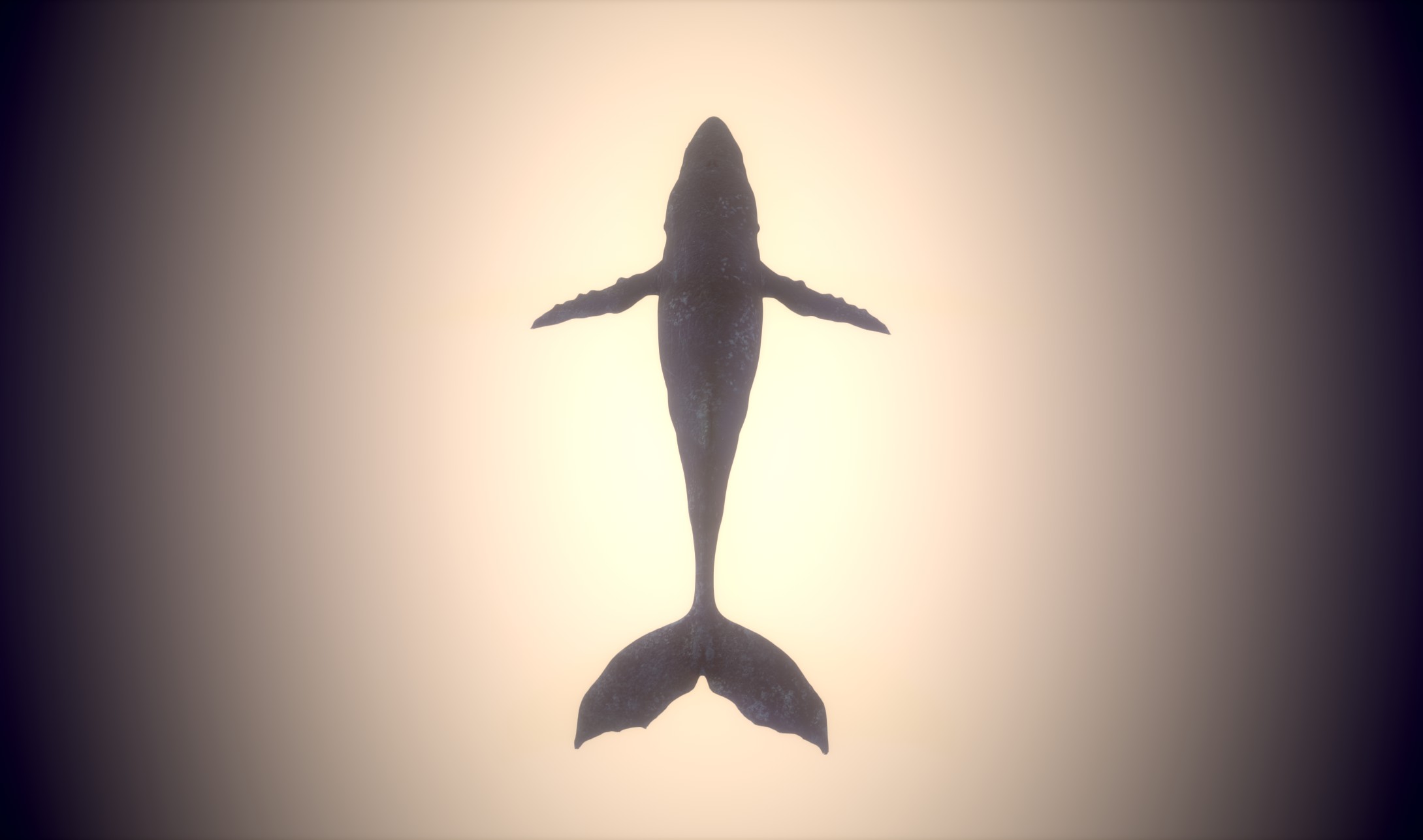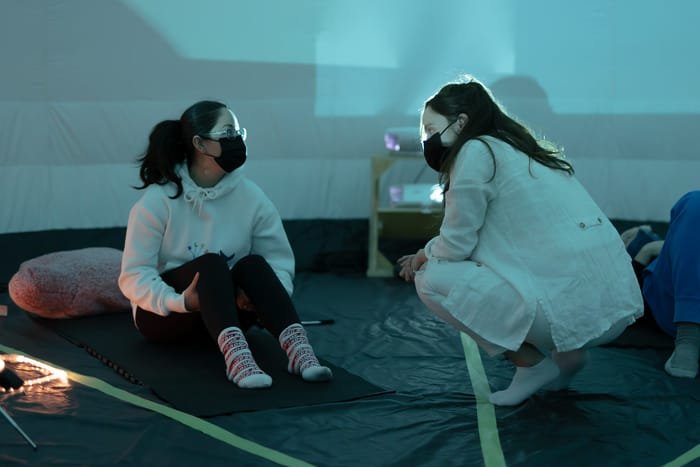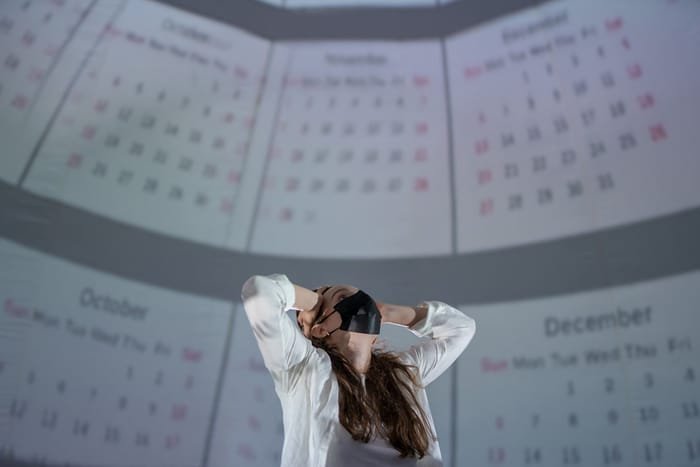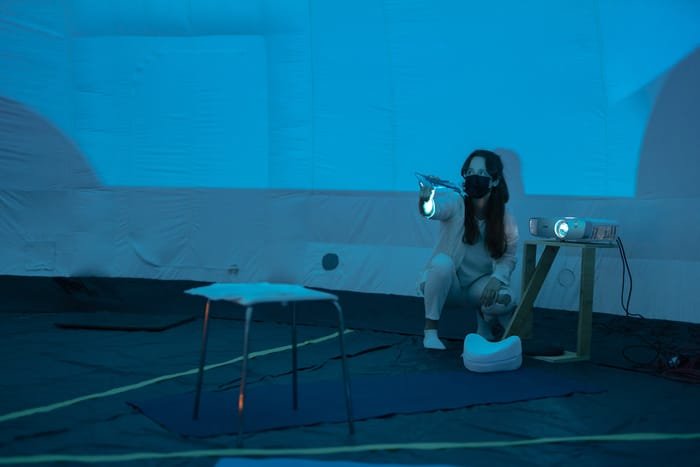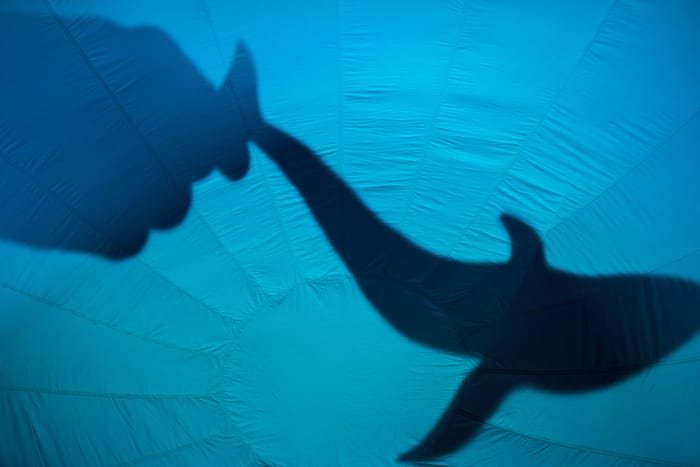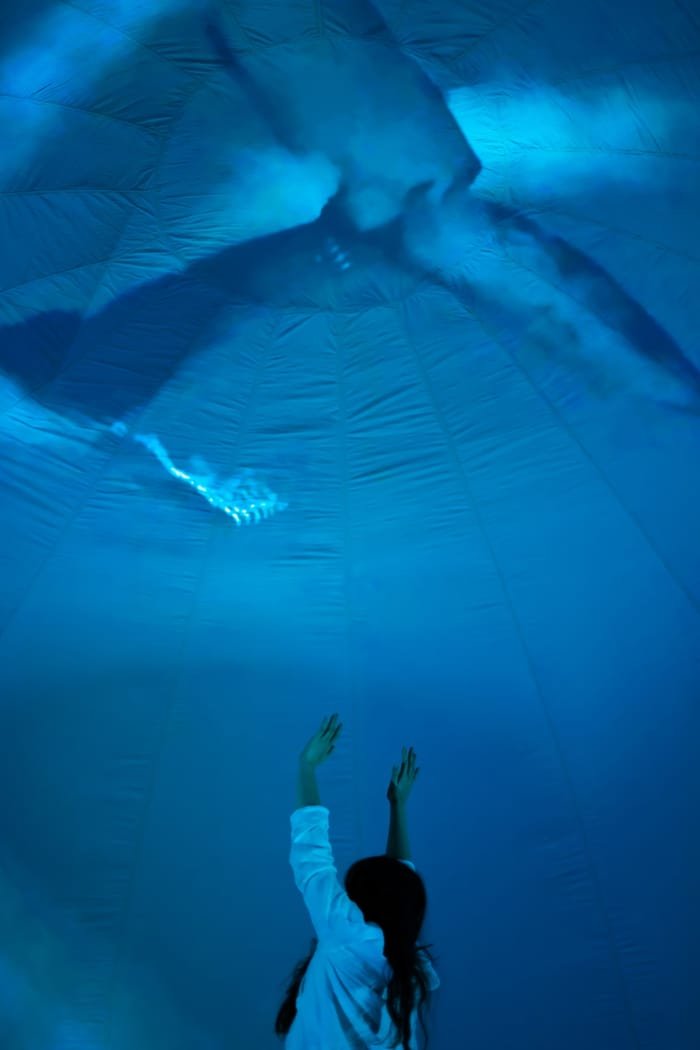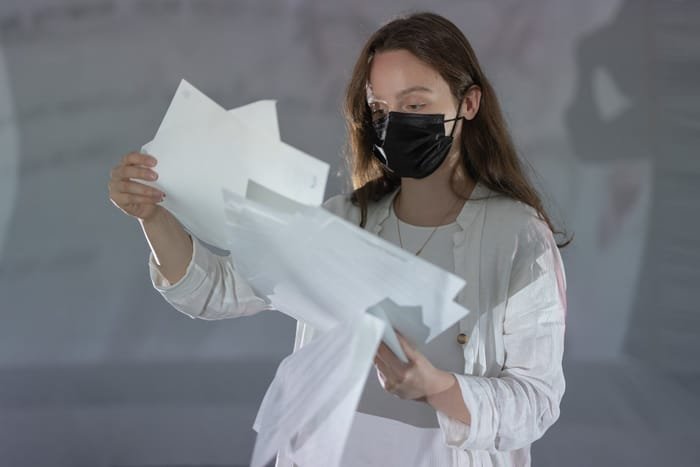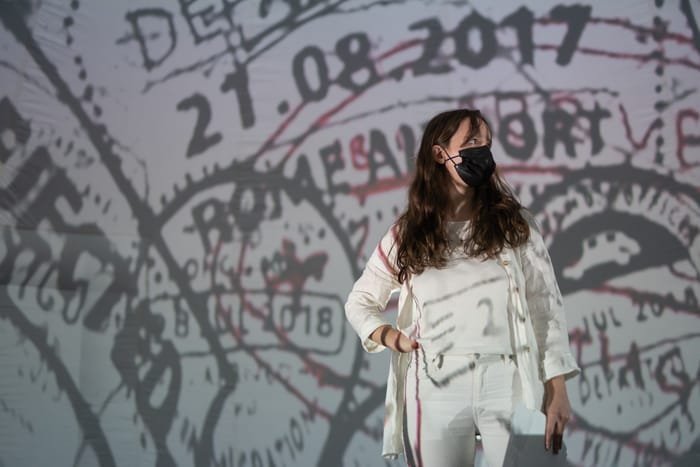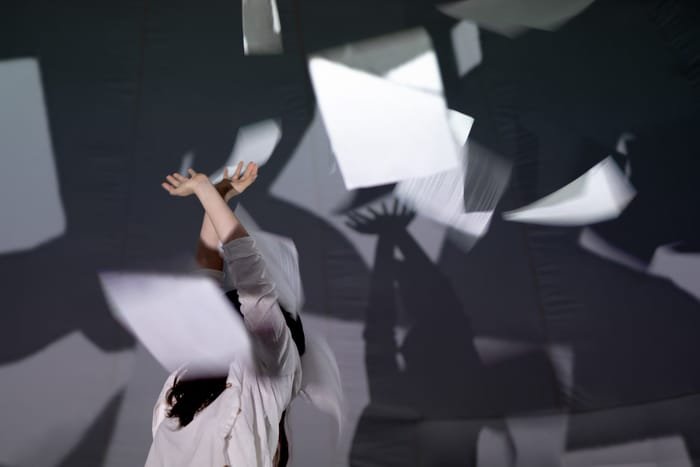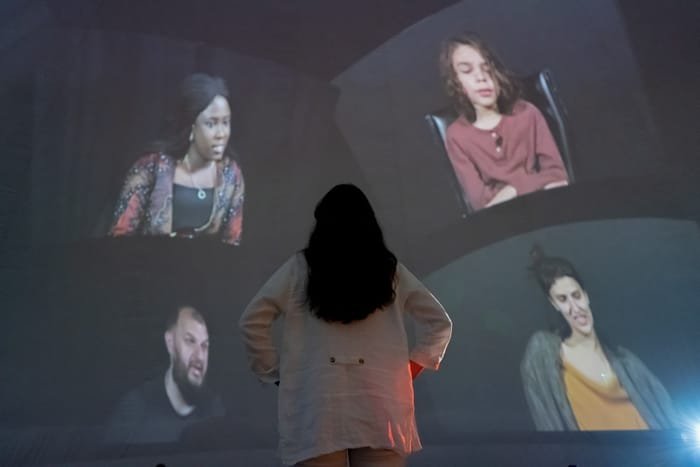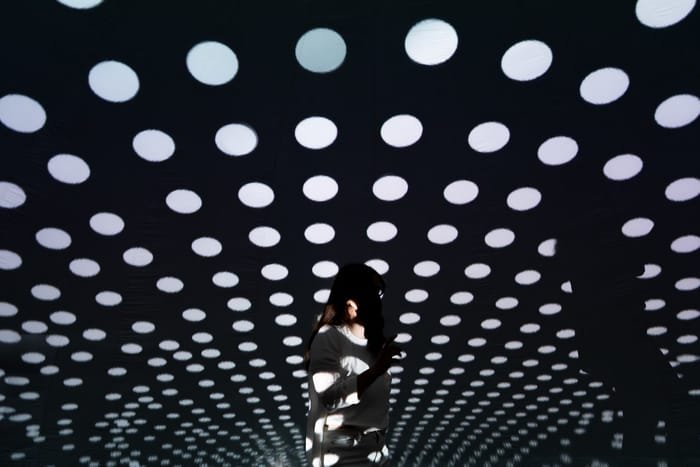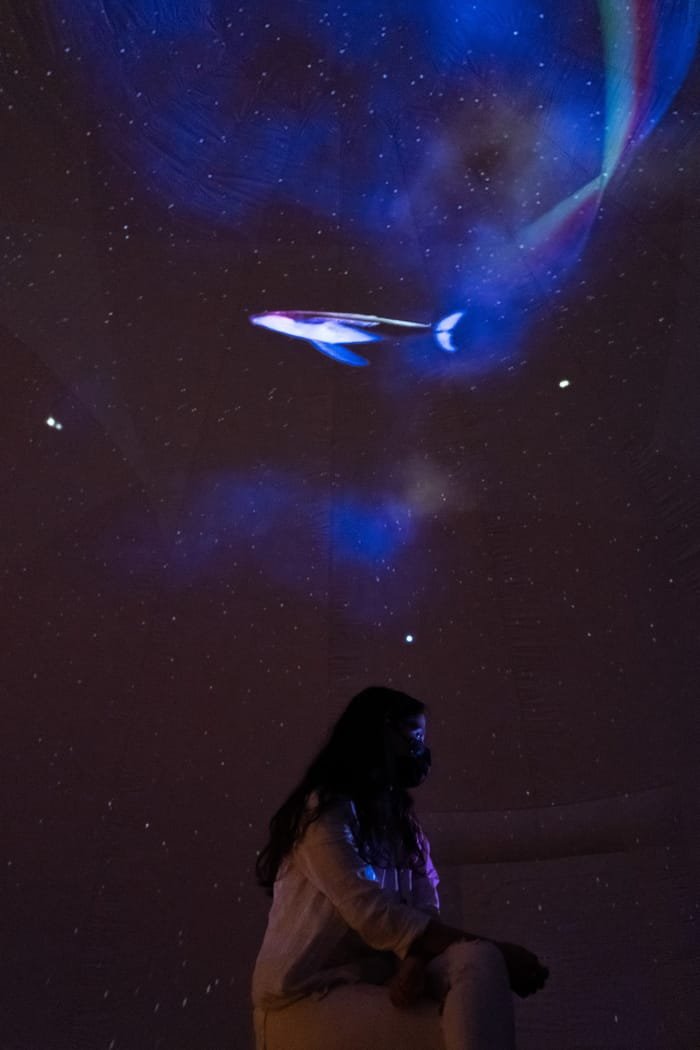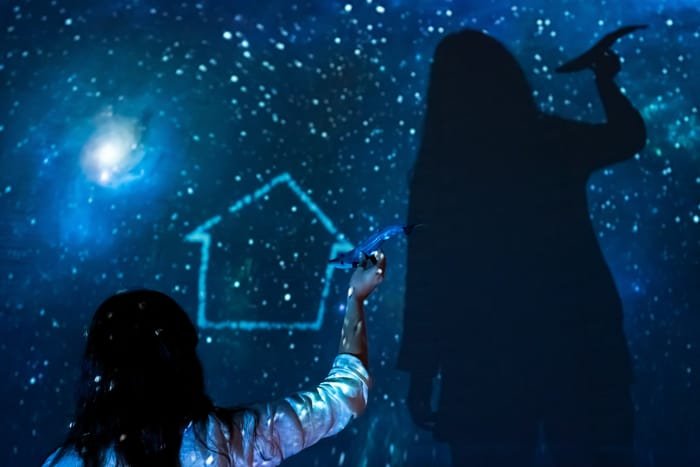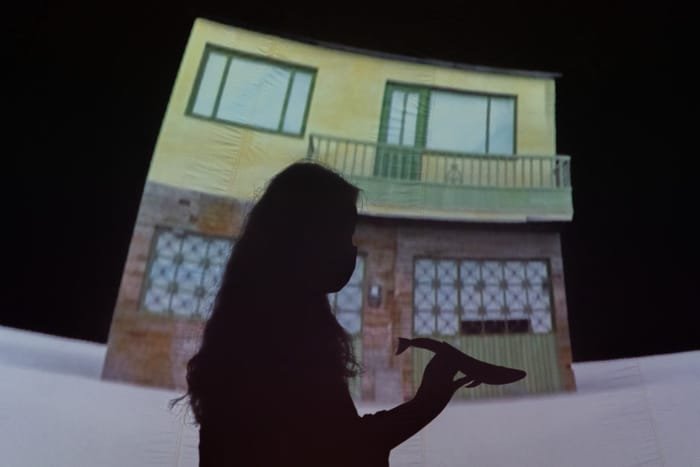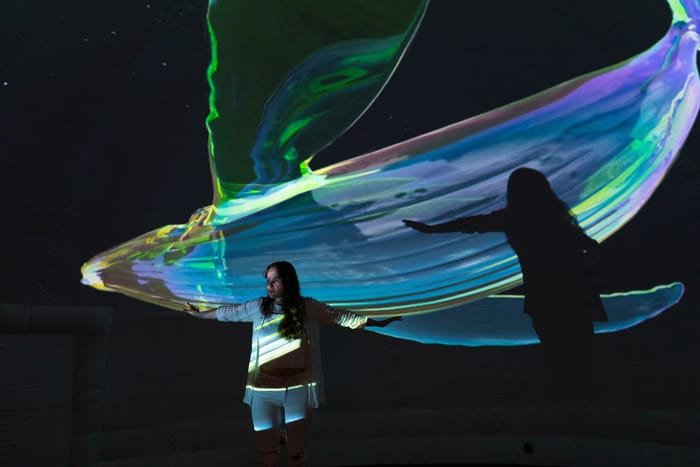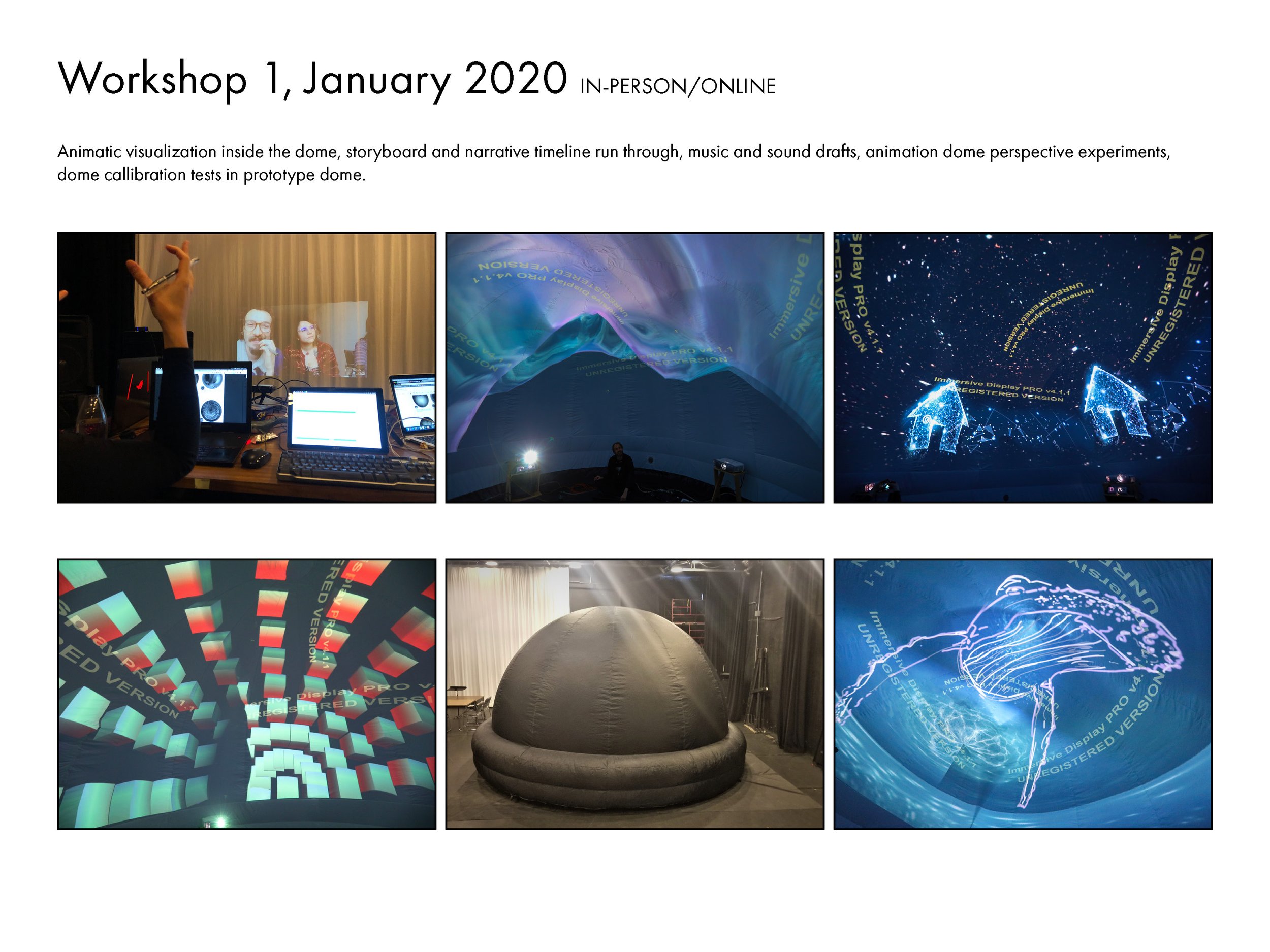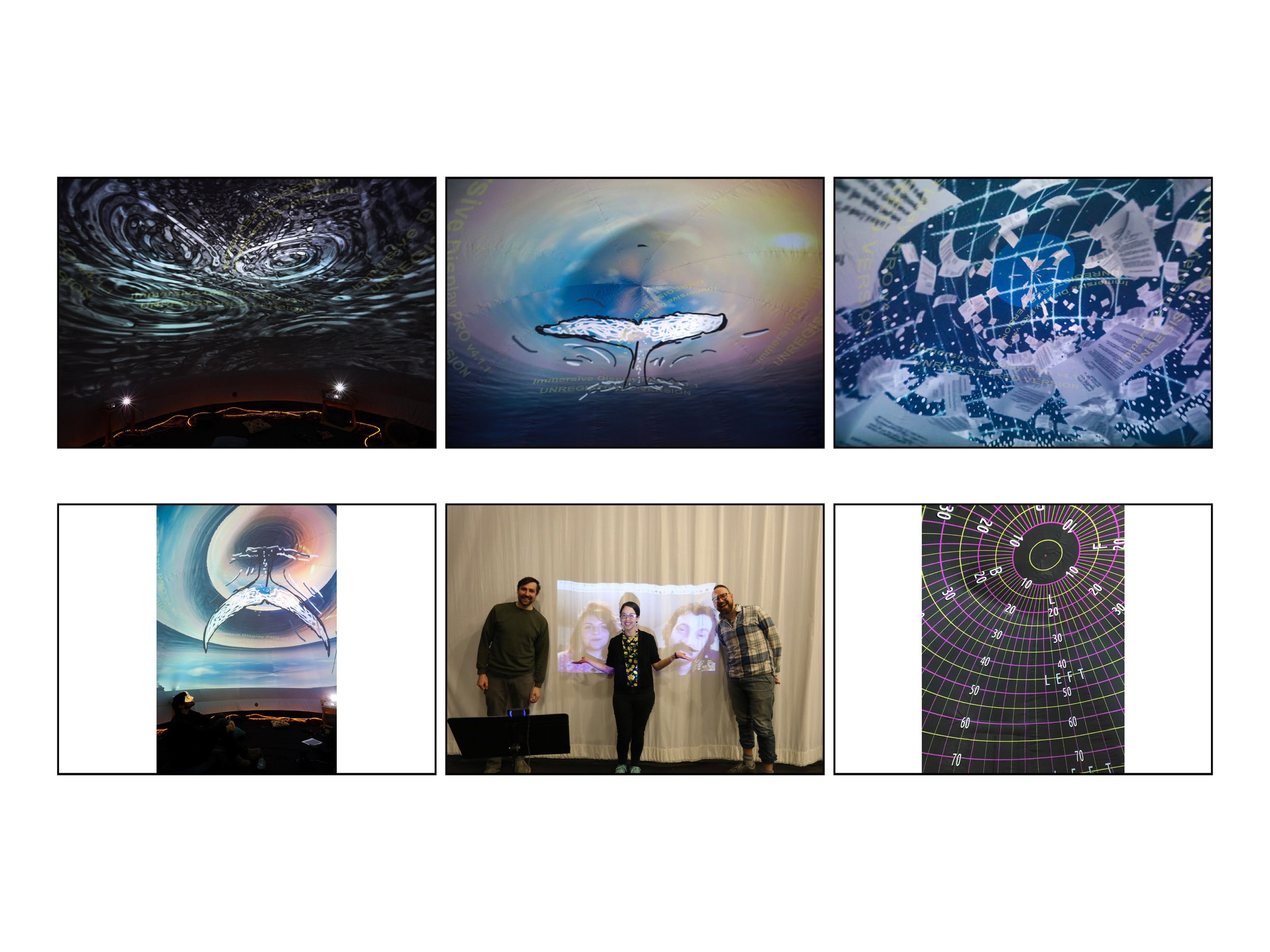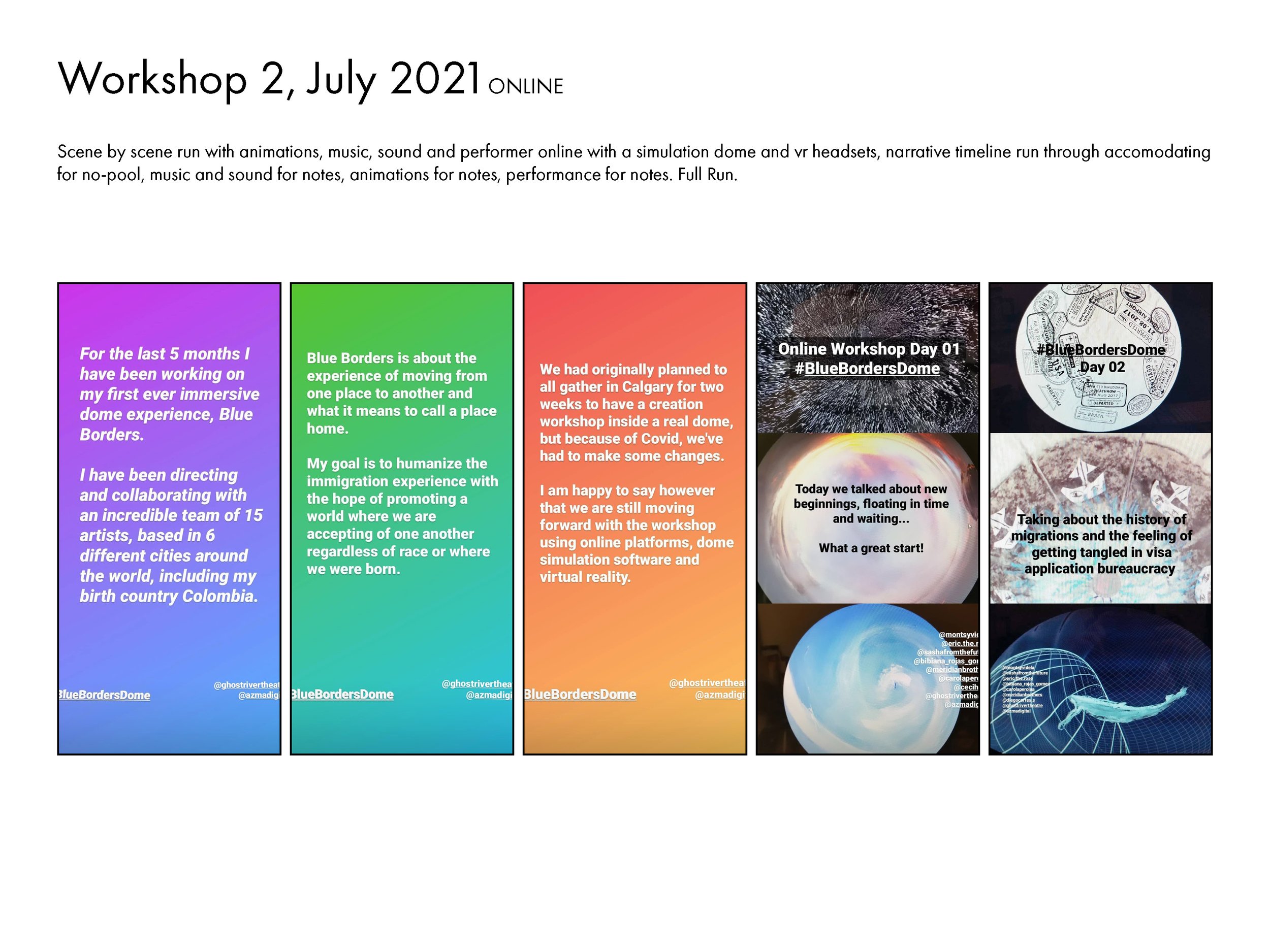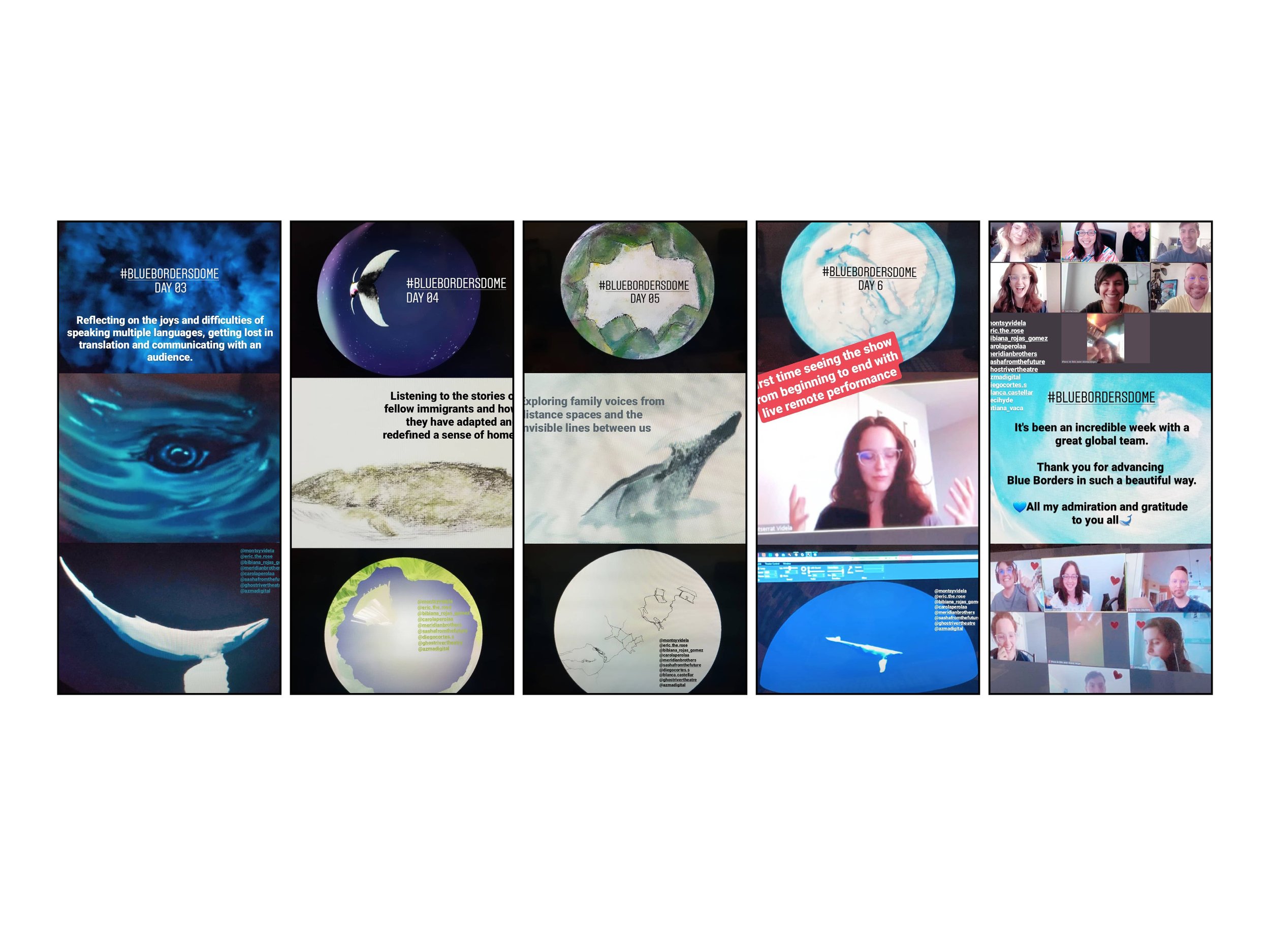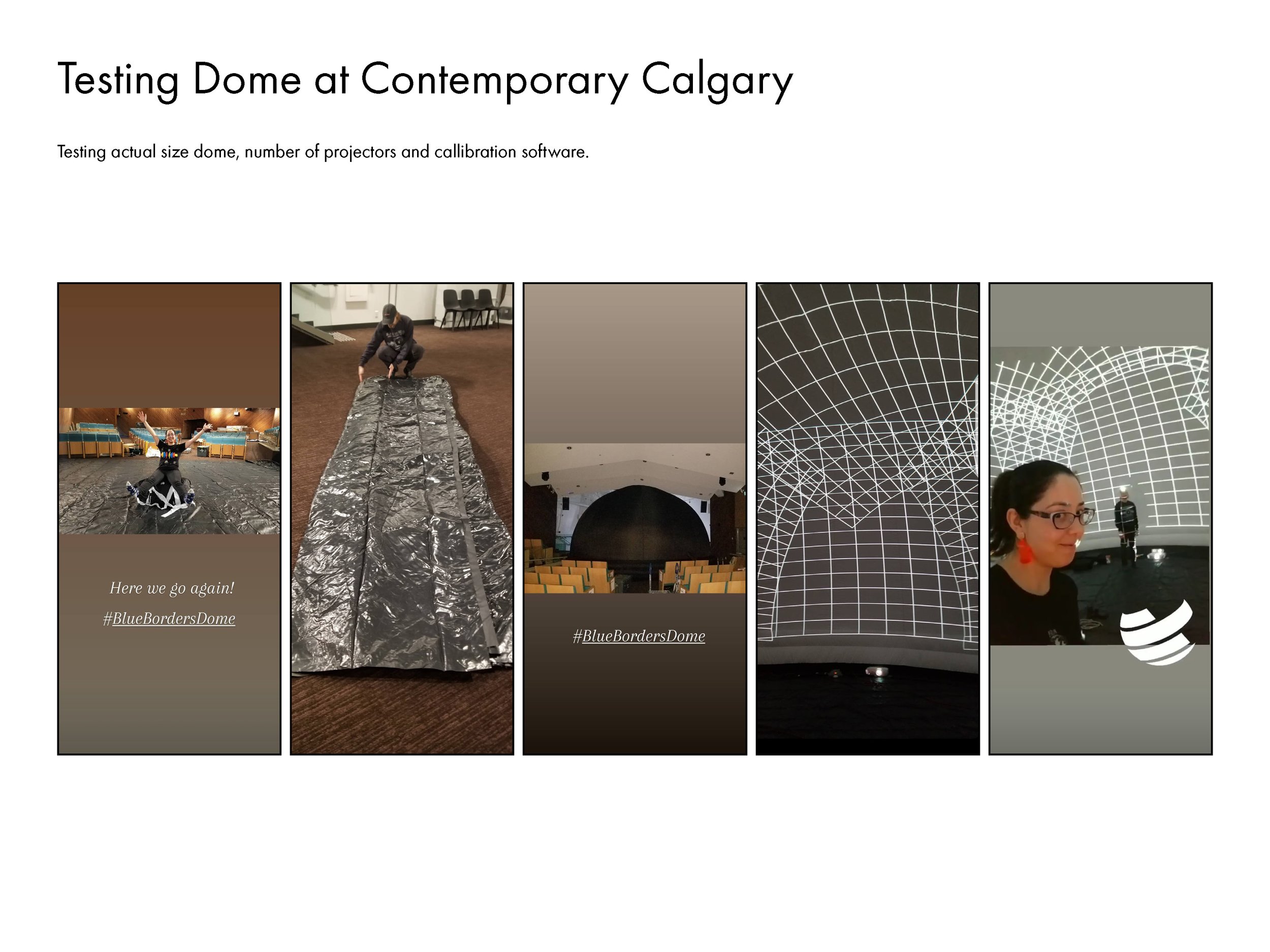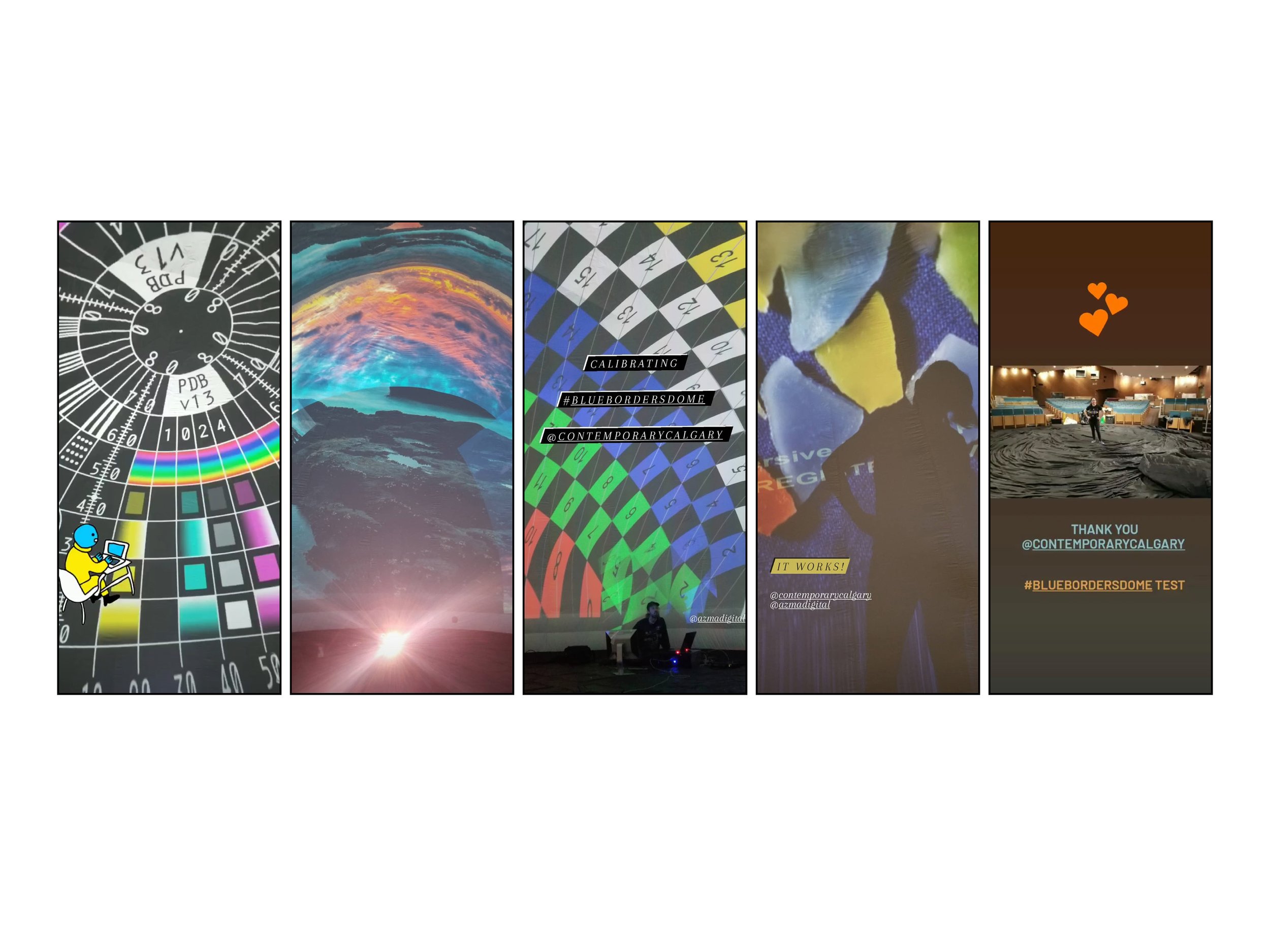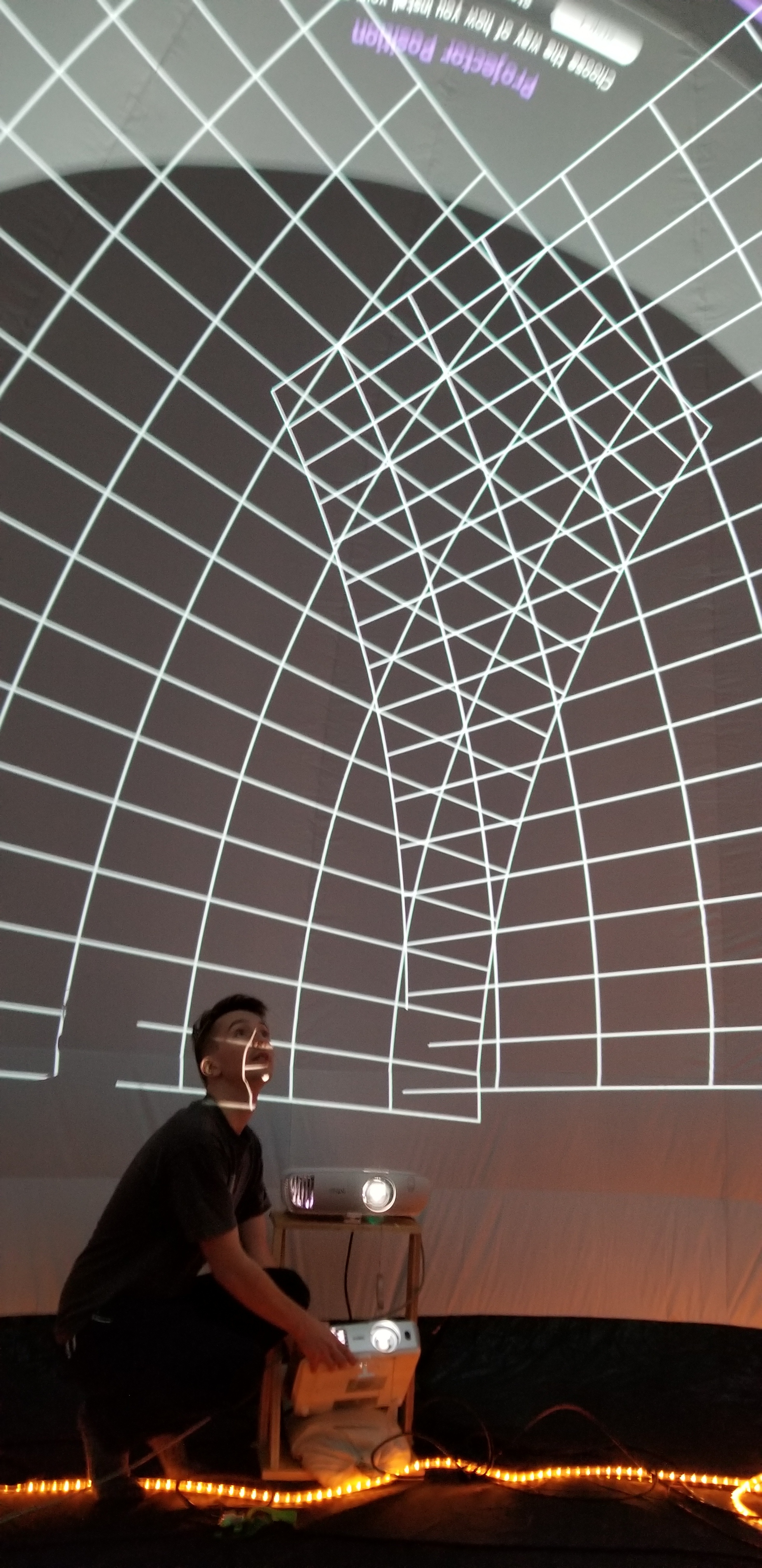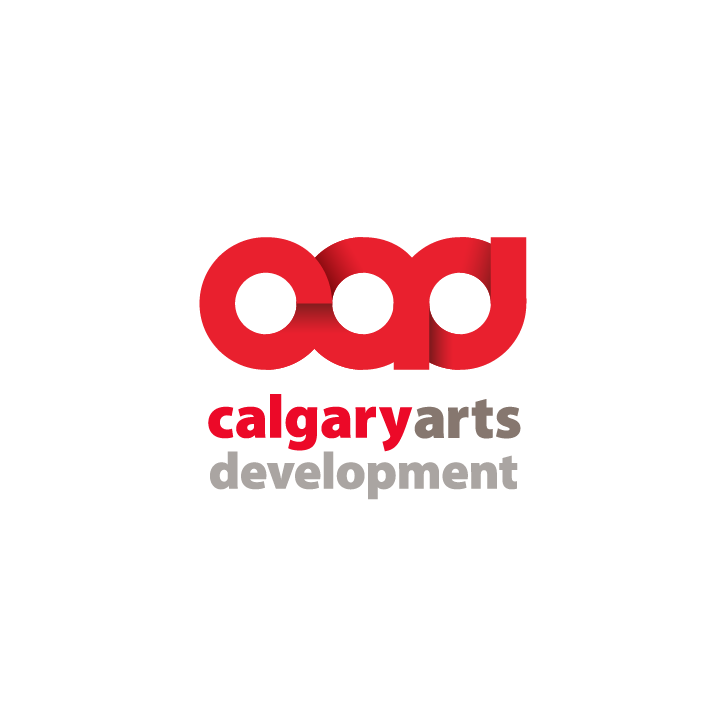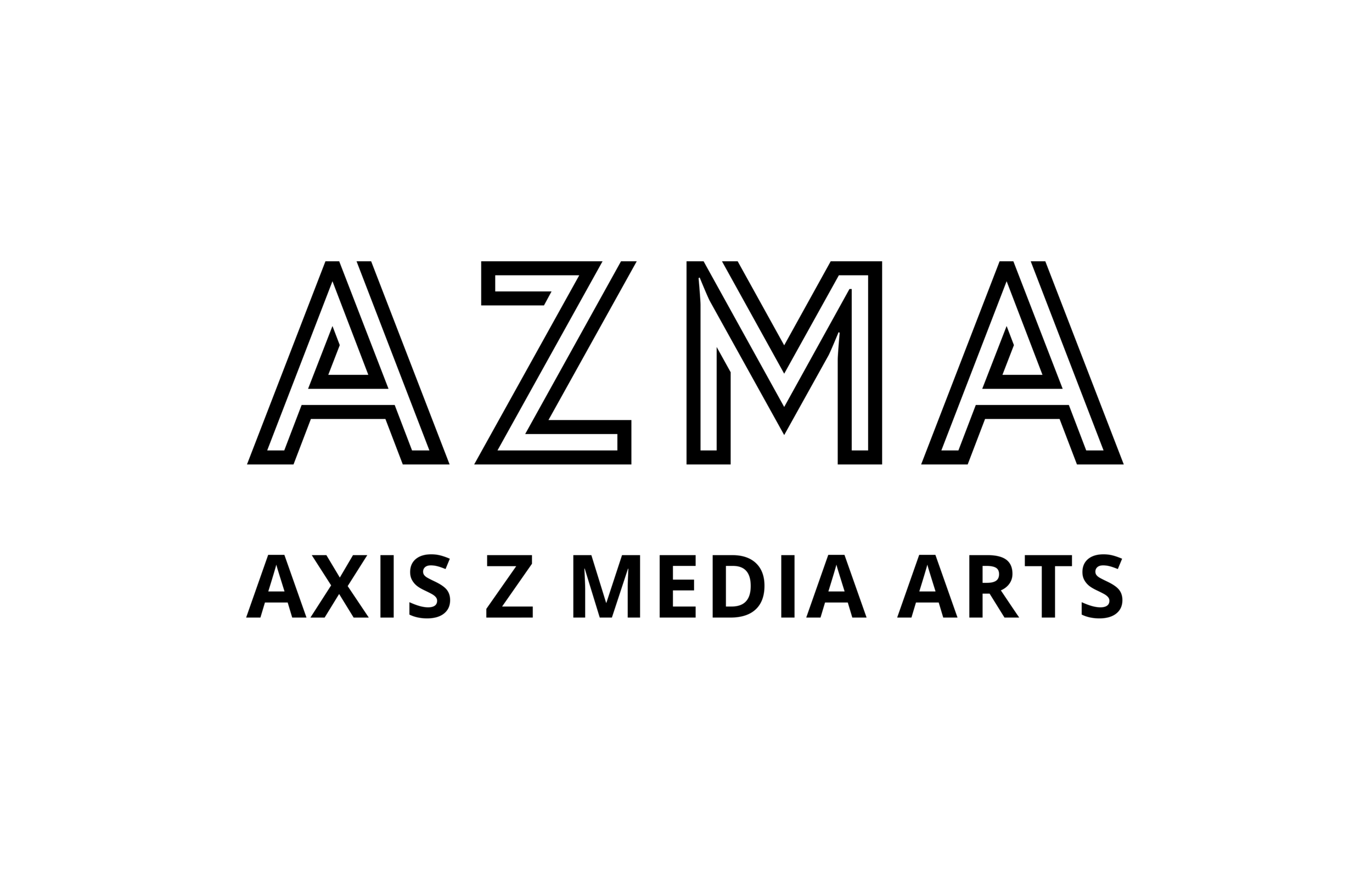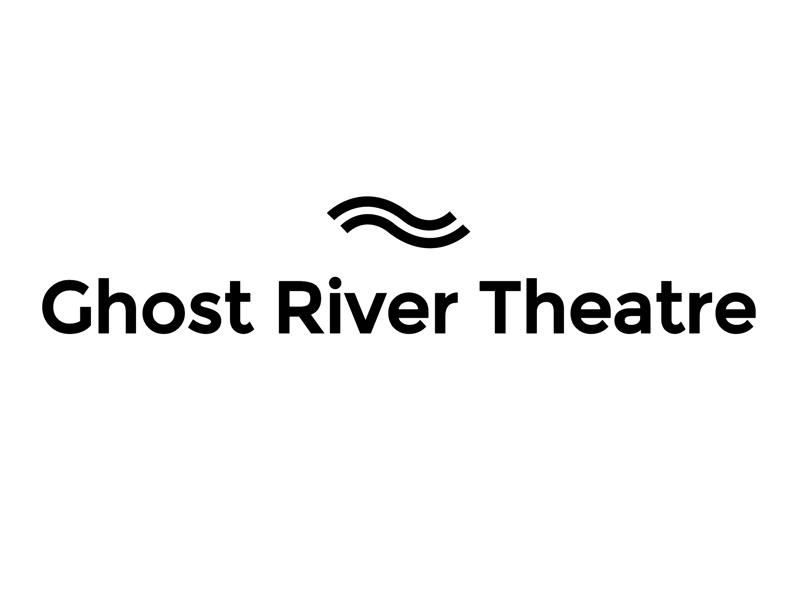Blue Borders
“Man is born free, and everywhere he is in chains.” – Rousseau
How do invisible lines have such a monumental impact? Based on my personal immigration experience, Blue Borders explores how studies of whale communication and migration can pave the way to understanding the complexities of immigration, the concept of borders, and our relationship with the world we inhabit. Combining cutting-edge animation techniques and dome projection technology, Blue Borders invites the audience into a sensory experience like never before imagined - a visual environment projected onto a dome, complemented by a live-performed audiovisual essay.
WORK IN PROGRESS BLOG
September 2019 - August 2021
Blue Borders was originally conceived as a dome projection show with elements of performance. It evolved to incorporate a narrative similar to the ones often found in audiovisual essays and combining original music/sound and animation. It was planned as a visually immersive sensory experience telling a story of borders and migration through a borderless frame. It is based on my personal experience as a Colombian émigré often enmeshed in the impediments and absurdities of borders using a contrasting metaphor of the humpback whales migrations and a comparatively “borderless” existence, that also faces existential hazards to migratory routes.
Due to COVID-19 my original timeline and concept were greatly impacted and I was forced to make multiple adaptations. This project was both very rewarding and very challenging. COVID-19 had a huge impact on the mental health and work capacities of my collaborators and I was forced to constantly adapt to schedule changes, people’s availability and the fluctuating stress of a global pandemic. The project evolved, shifting from its original concept while maintaining its core artistic vision. I am still proud of what was achieved like completing 7.5 of 12 chapters of the show totalling 45 minutes of original content and combining professional 3D, 2D and experimental animation using different techniques and unique looks and successfully directing a local and international team of 24 creatives.
WORK IN PROGRESS BLOG
June 2018 - April 2019
Working on this project was an incredible and satisfactory experience for me, as well as a creative and personal challenge. I was able to research whale migration, ocean settings, global mobility and the impact of borders and migration policies. However, since this topic is so vast, I decided to focus on researching and creating material from my personal experience as an immigrant crossing many kind of borders in the last 7 years.
I understand borders not only as a geographically and politically defined lines, like those that determine the territory of a country, but also as lines that are everywhere, anywhere, visible and invisible. I have faced borders that are based in language, spaces, culture and tradition.
For 2 weeks in July, I worked closely with Ghost River Theatre’s Artistic Director Eric Rose. During this time, many ideas came out, including key images for the development of the story. After this session I created 4 different storyboards and decided to develop sketches and short animated sequences of the recurrent images that were present throughout the 4 storyboards.
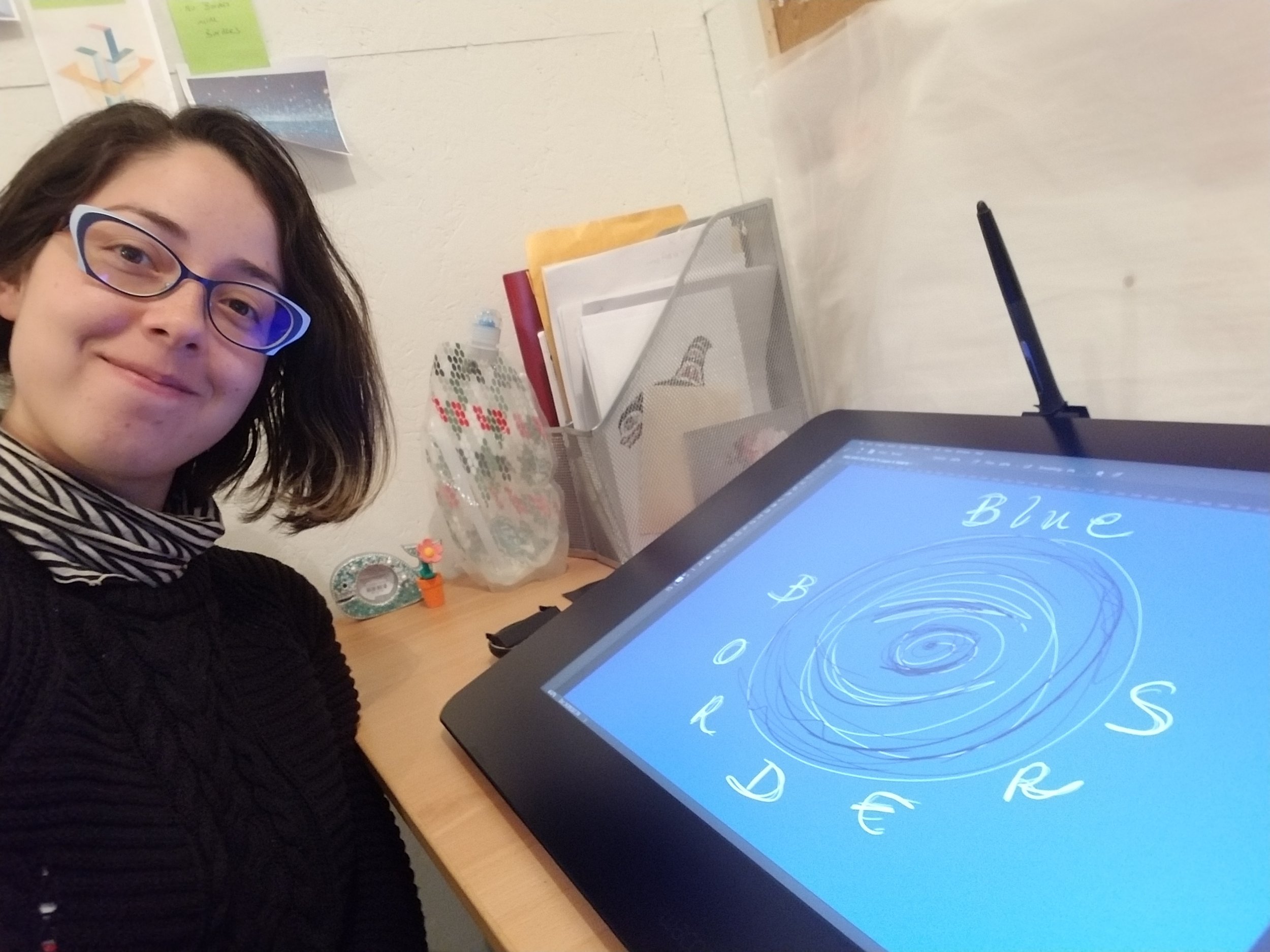
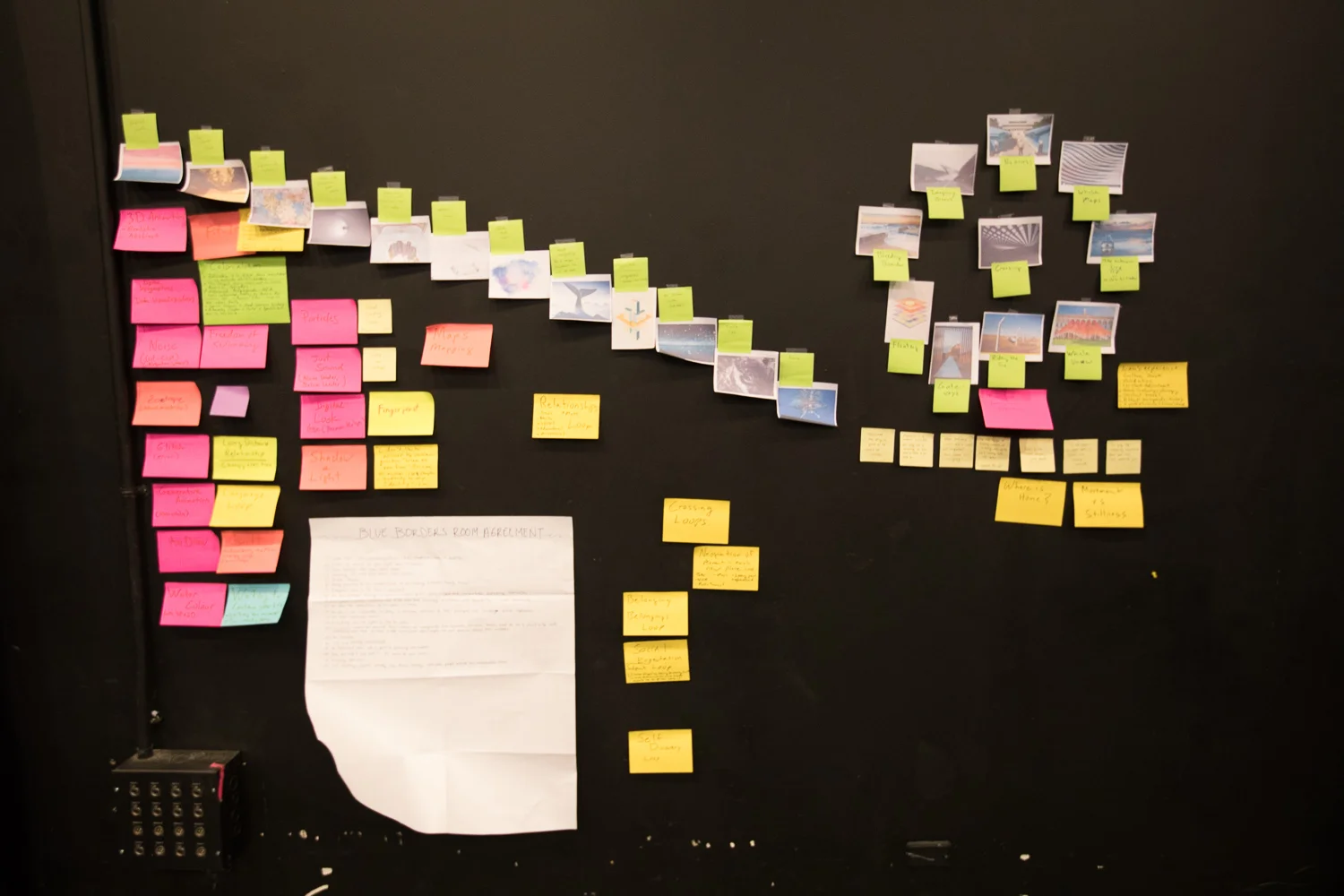
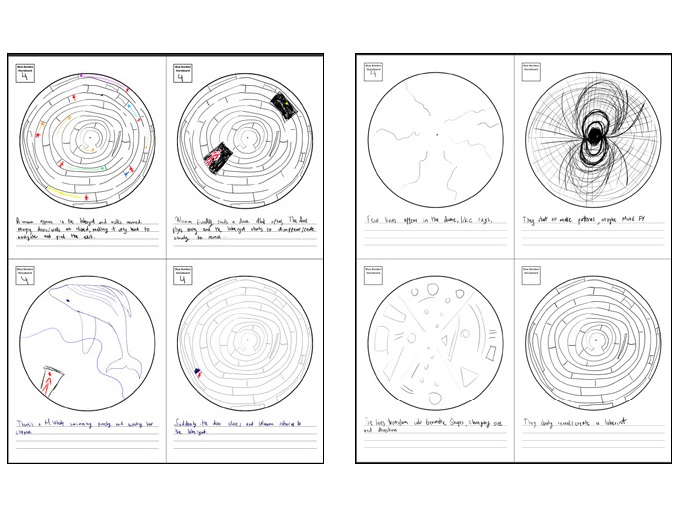
ANIMATION
This project requires that I experiment with the integration of 2D and 3D rendered and generative animation into a cohesive aesthetic. To achieve this I started creating animated tests using After Effects, Photoshop, Maya and Cinema 4D. This approach to learning was very successful and allowed me to have a very accurate sense of workflow, understand the movement of a whale inside the dome, and play with different perspectives. I also experimented with full dome format and equirectangular renders.
I was happy to work closely with expert 3D Animator Sasha Stanojevic who helped realize my vision of seeing my 2D and 3D animations projected inside the dome.
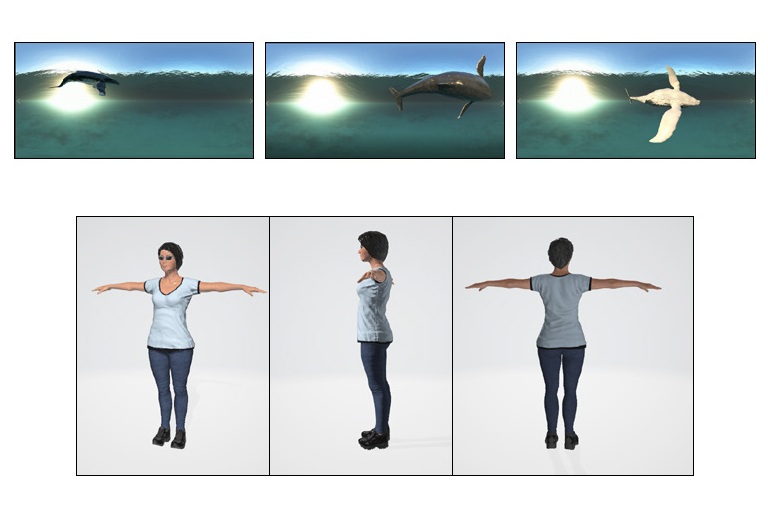
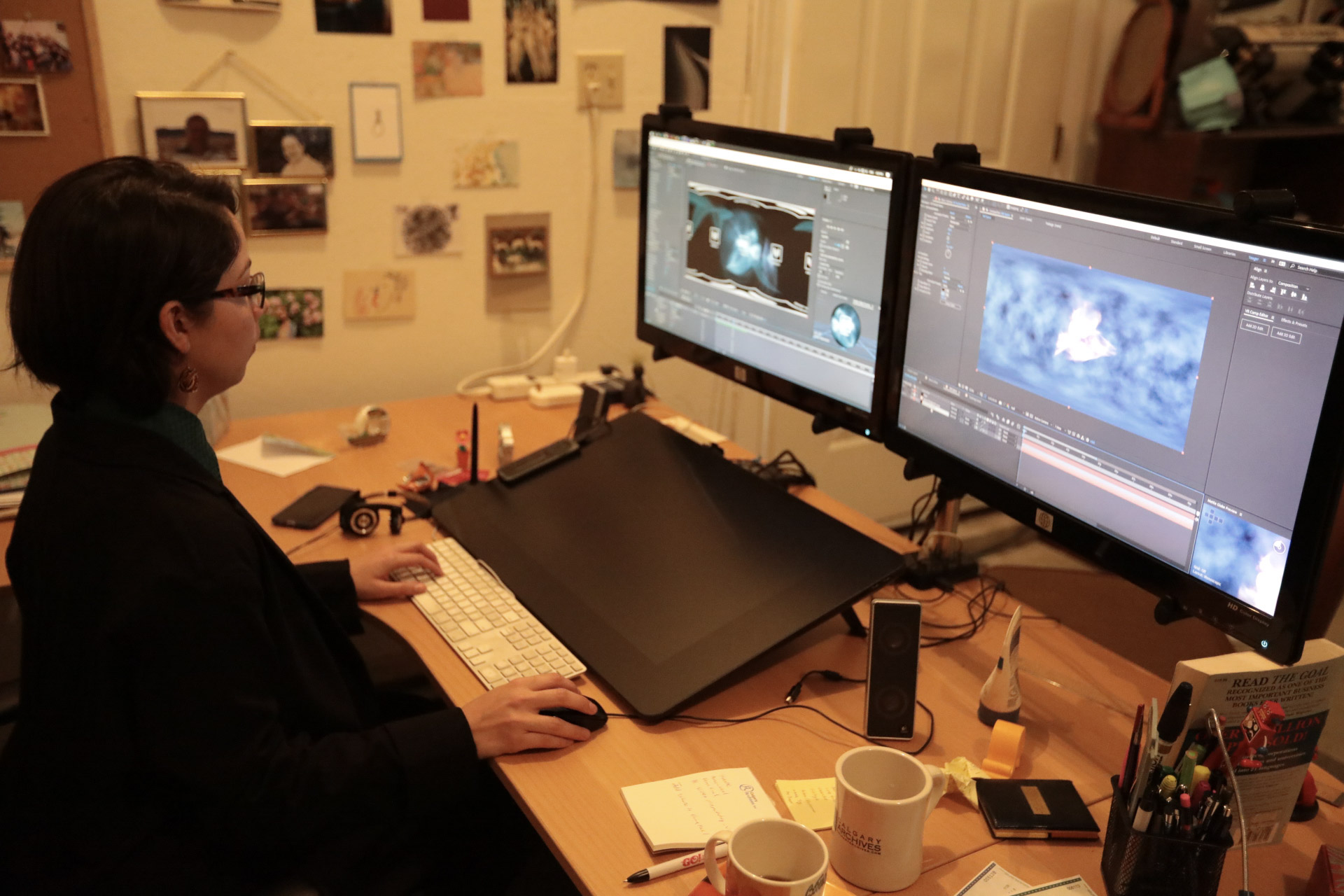
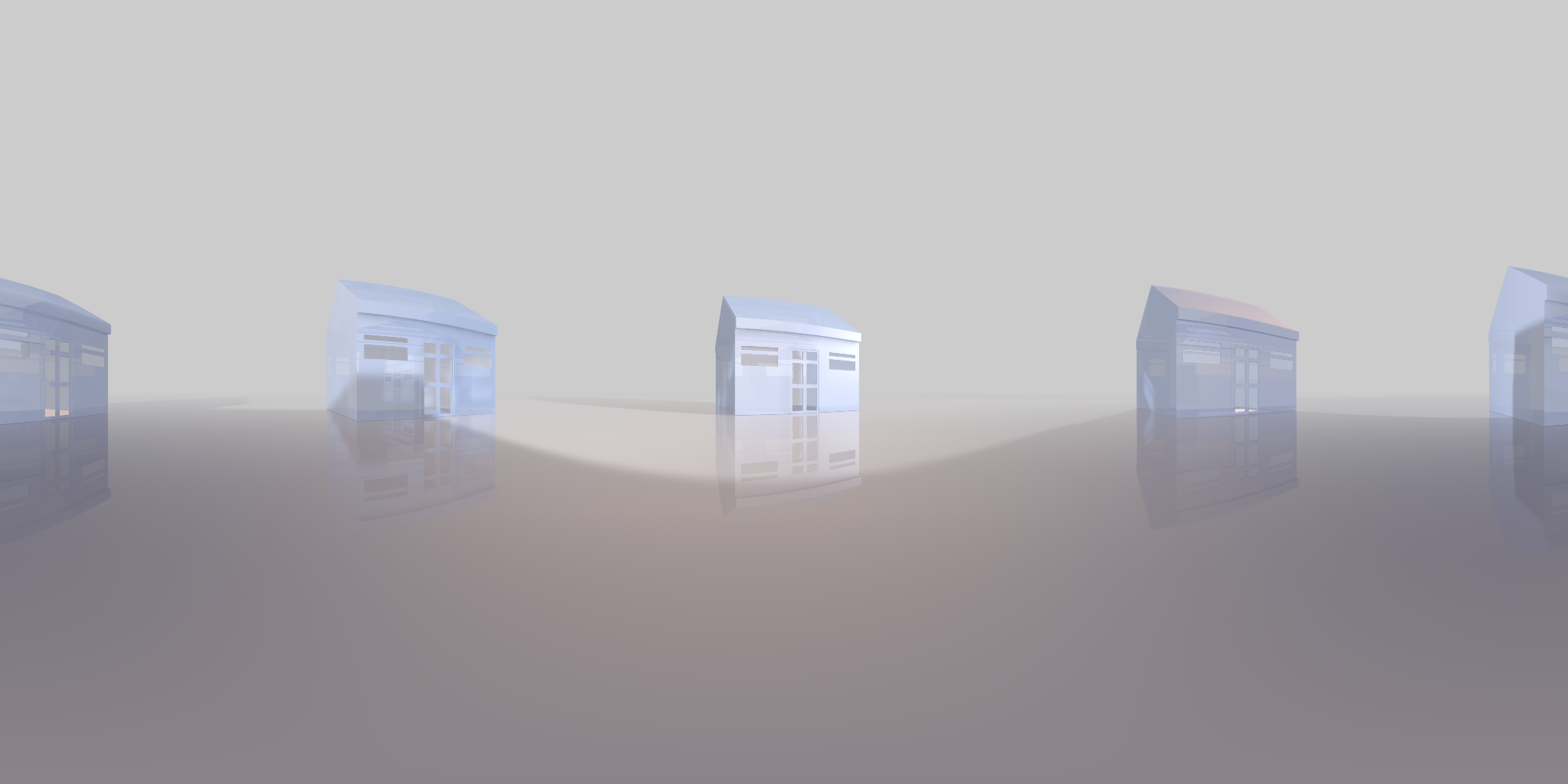
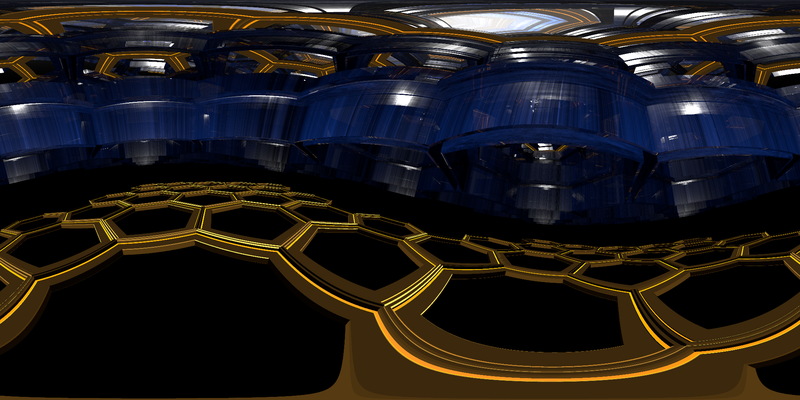
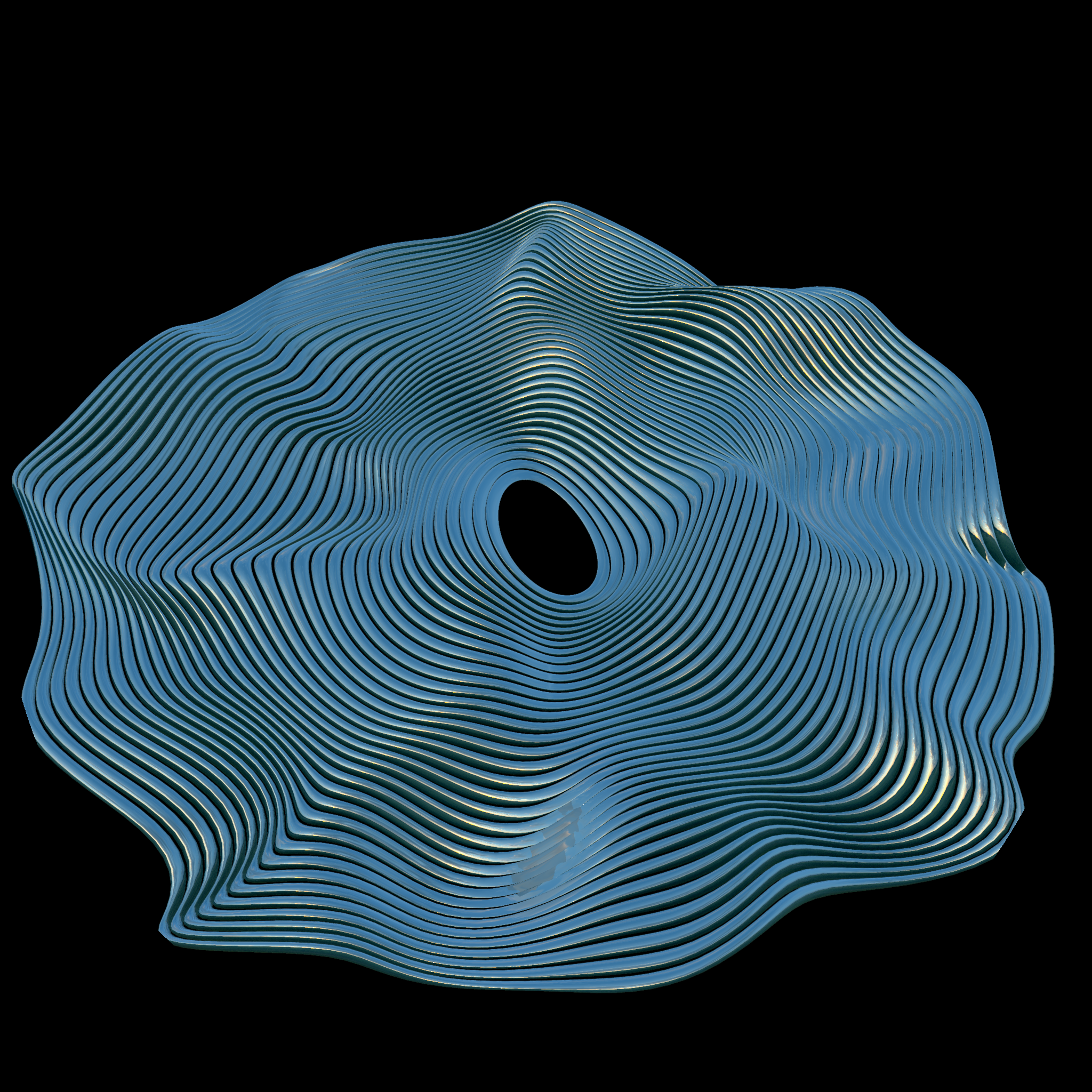
WORKSHOP
I was able to undertake a period of dome research and workshoping to test content within an actual dome. This allowed me to put together a workshop where myself and a small team were able to test different calibration and dome projection software, test animated content and see how it will actually look in a dome environment.
We researched many different dome options and eventually found an affordable and reliable option with inflatables, that allows us to set up very quickly and with only one or two people.
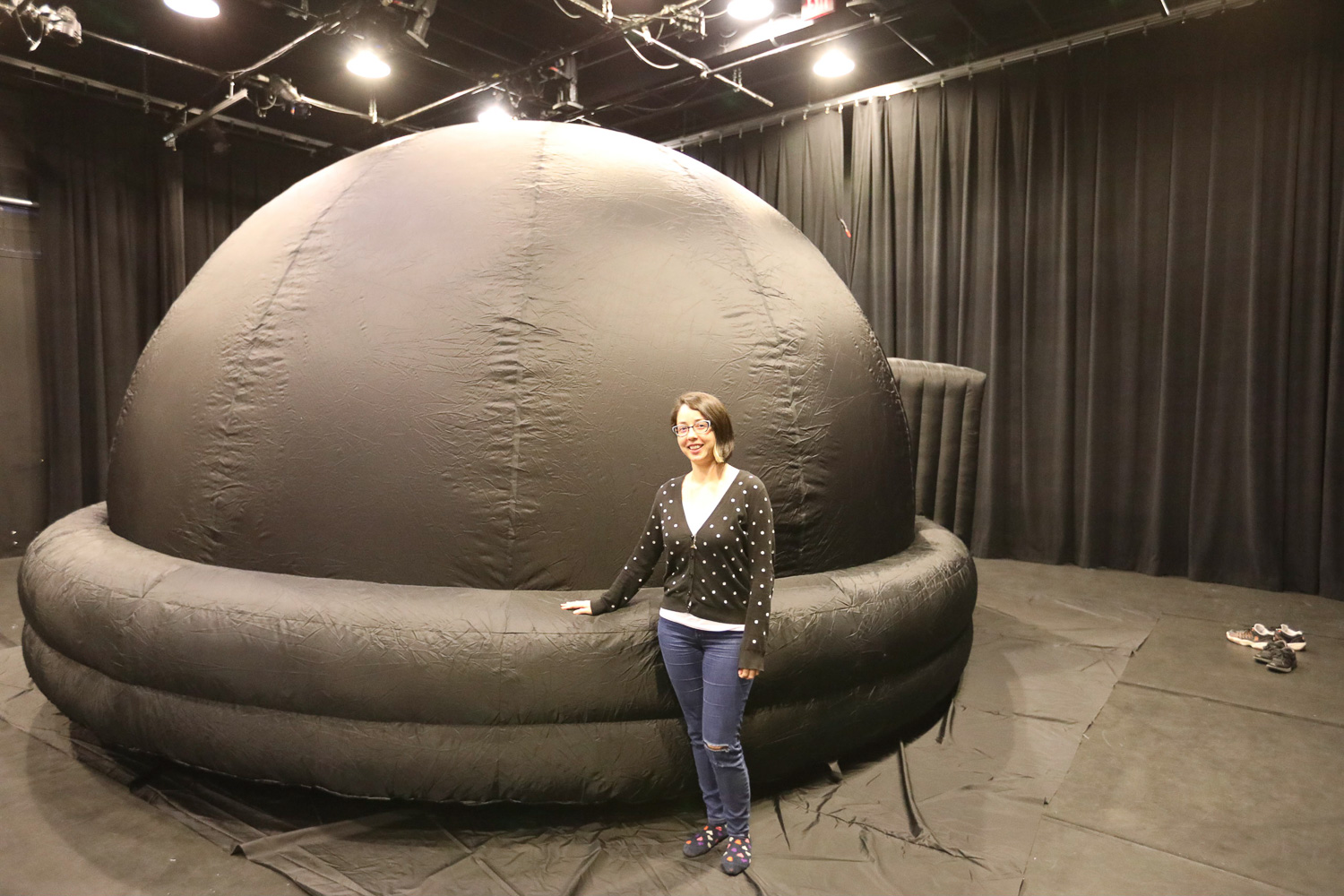
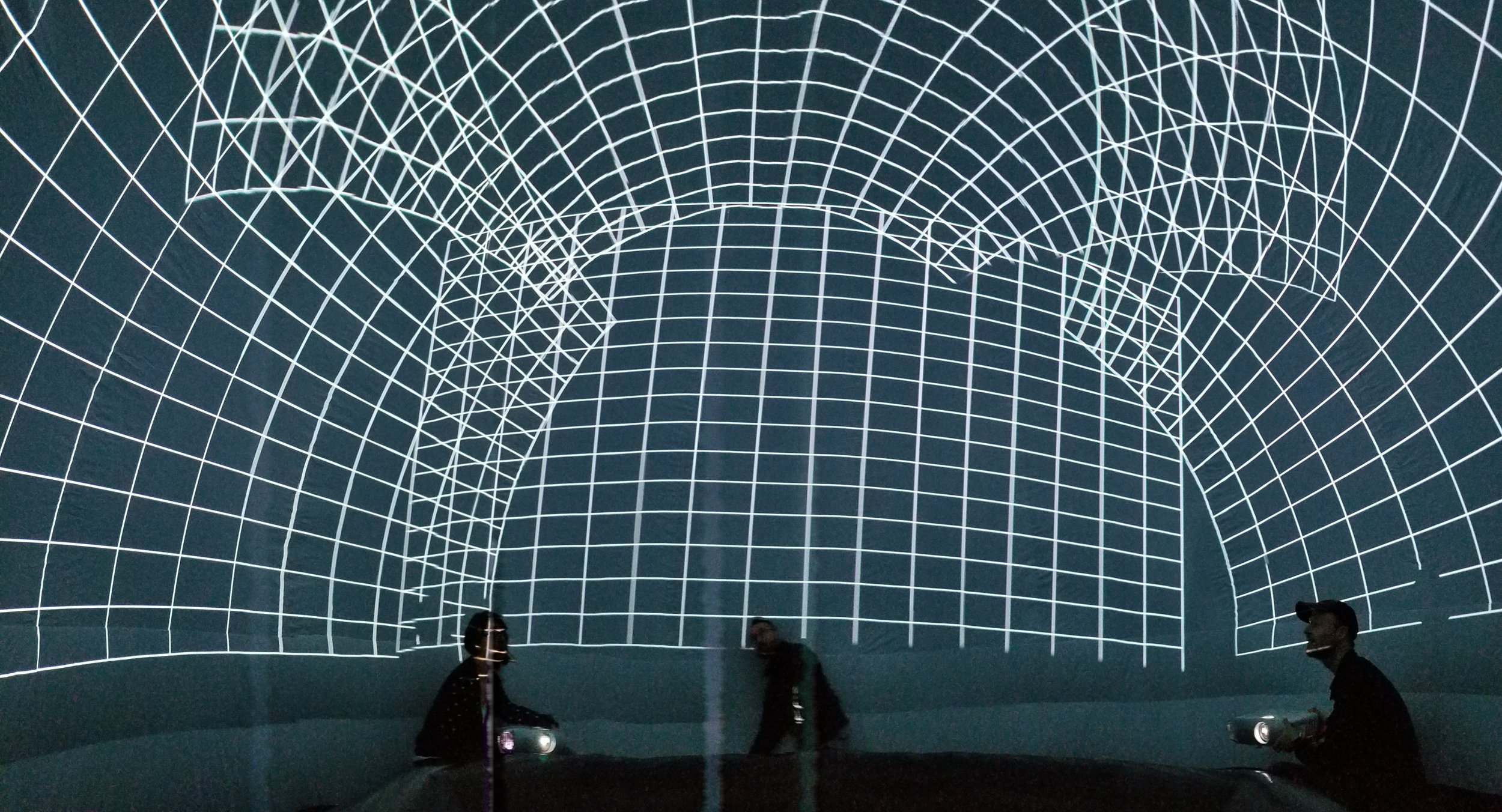
CALIBRATION
In order to project inside a dome with multiple projectors you need some way of warping and blending all of them together so as to create a seamless image. This is not easy and requires special software that is designed for blending and mapping multiple projectors. The best software uses a camera with a fish-eye lens attached to your computer that records test patterns from each projectors and uses that information to calculate the correct perspective warping and blending. We explored many different options to achieve this including: Fly Elise NG, AnyBlend, and VIOSO. In the end VIOSO ending up working the best. Using the VIOSO calibration file in Derivative’s TouchDesigner software we were able to playback our pre-rendered content along with generative graphics.
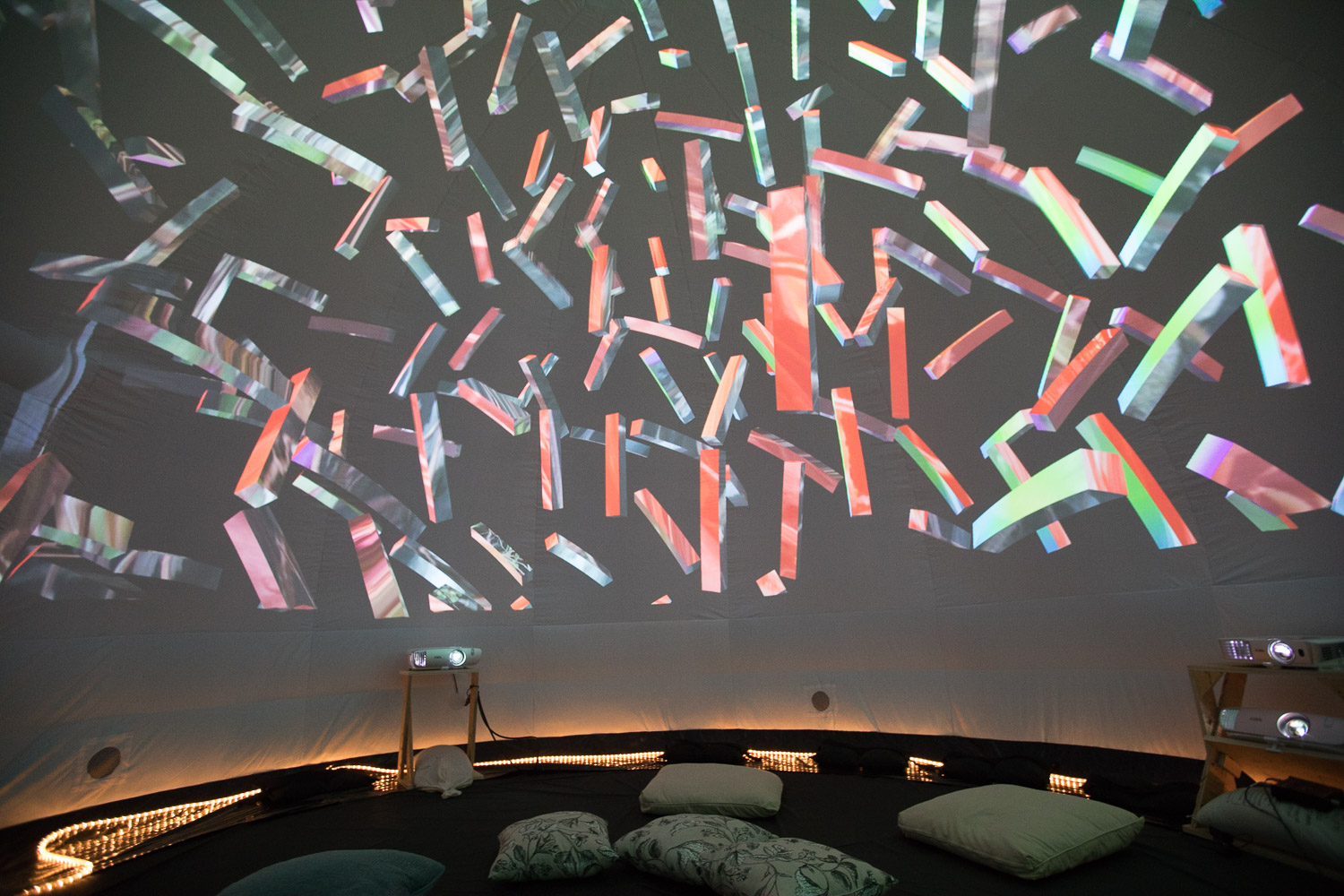
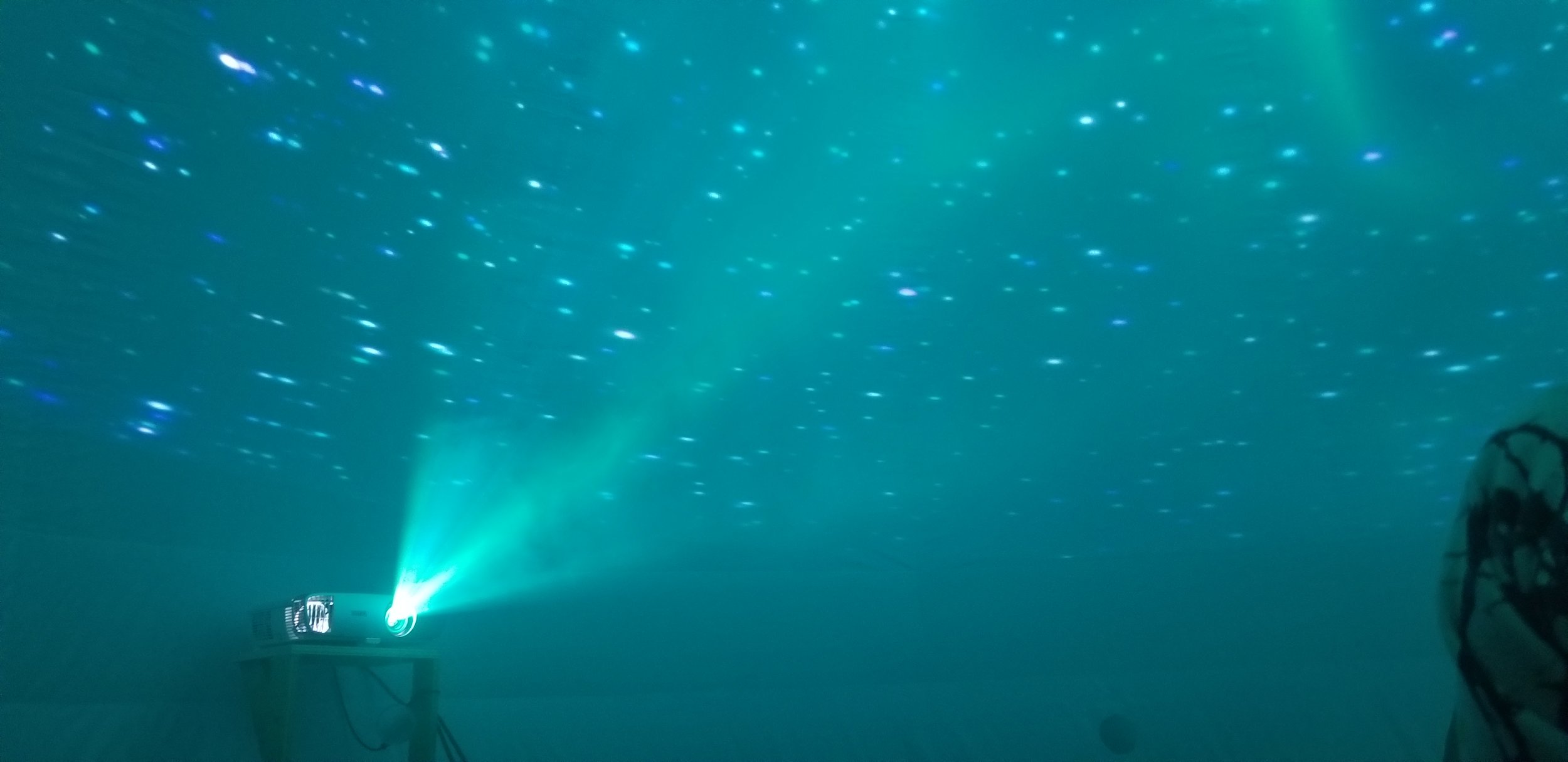
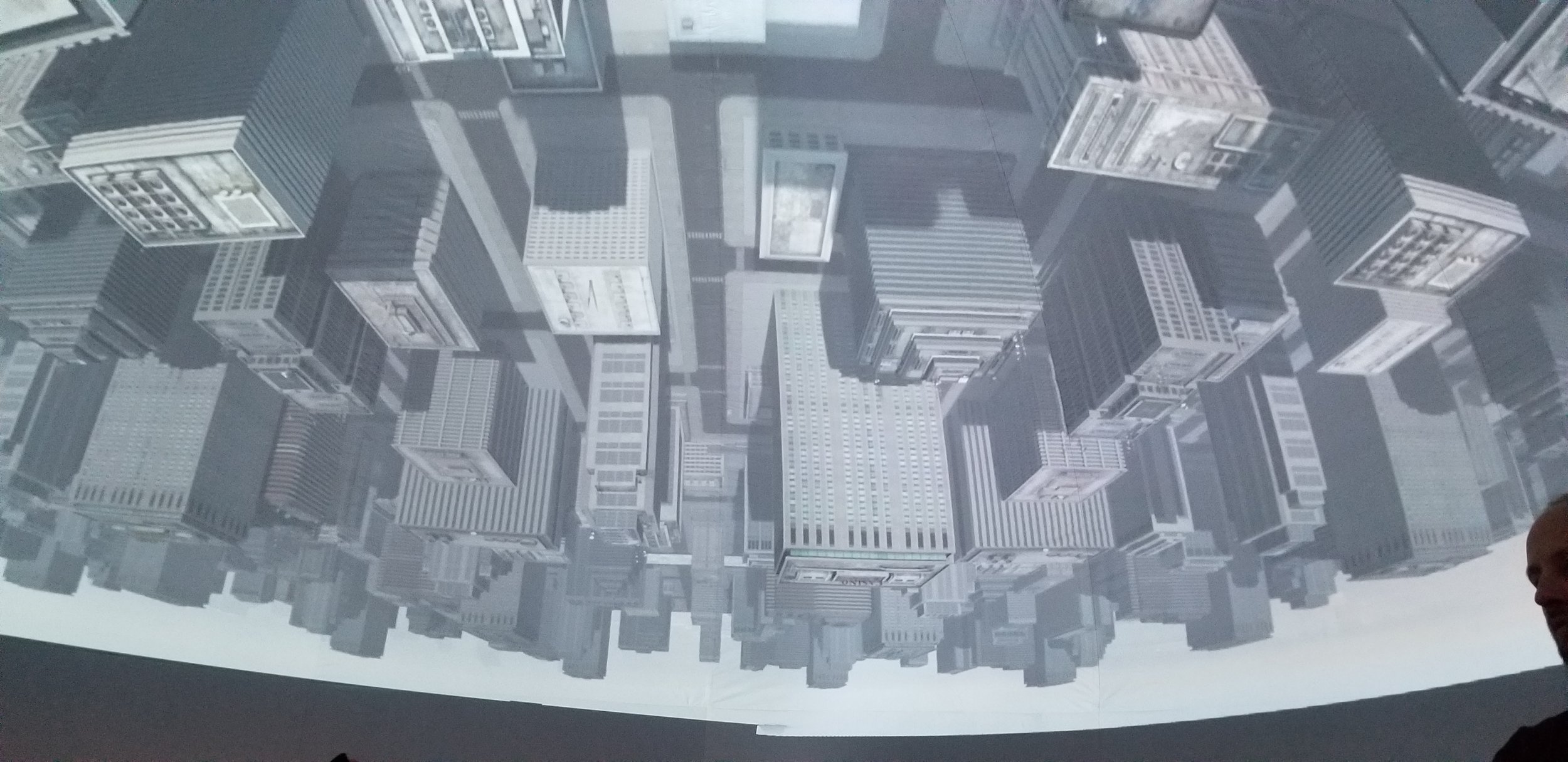
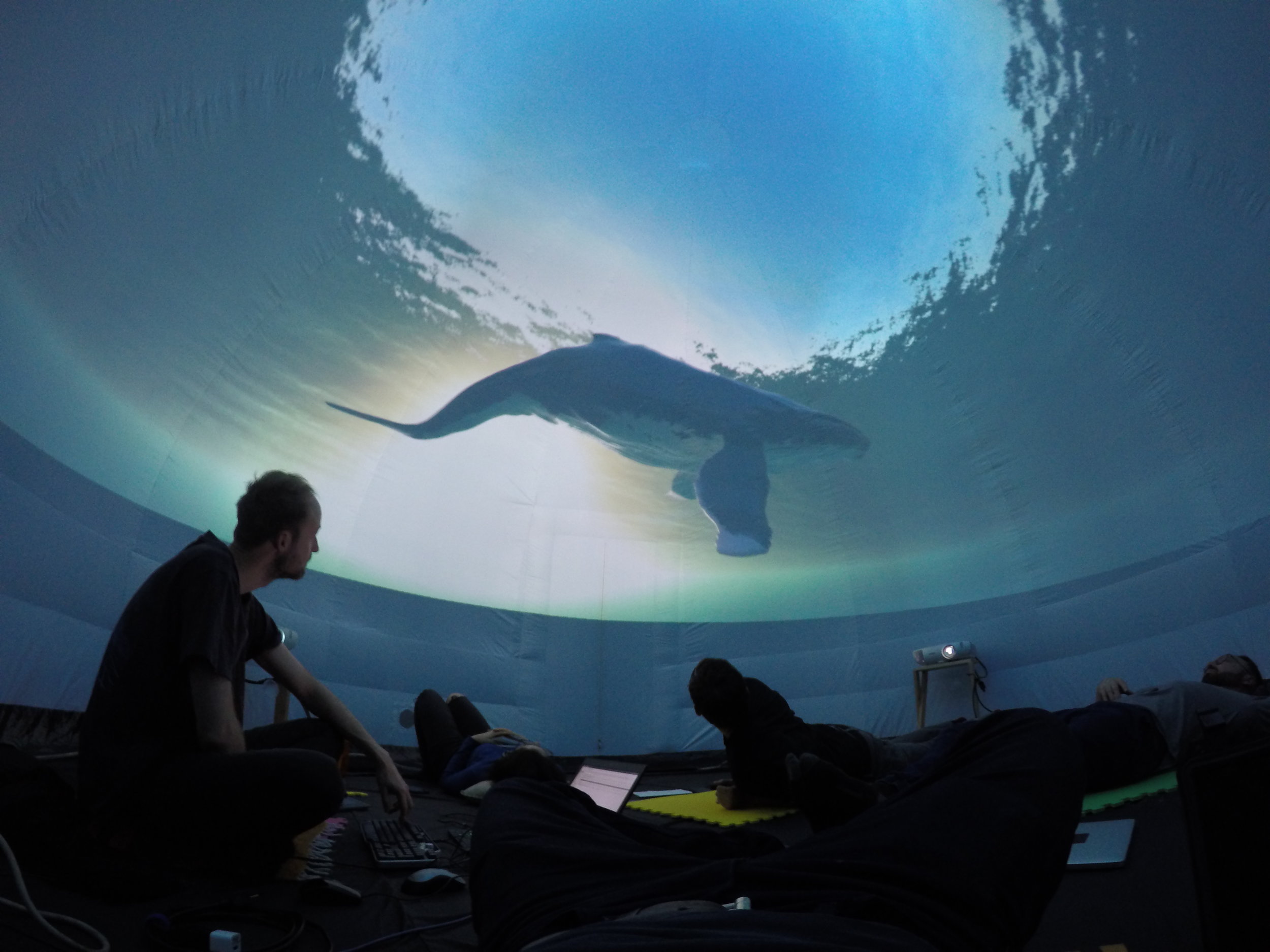
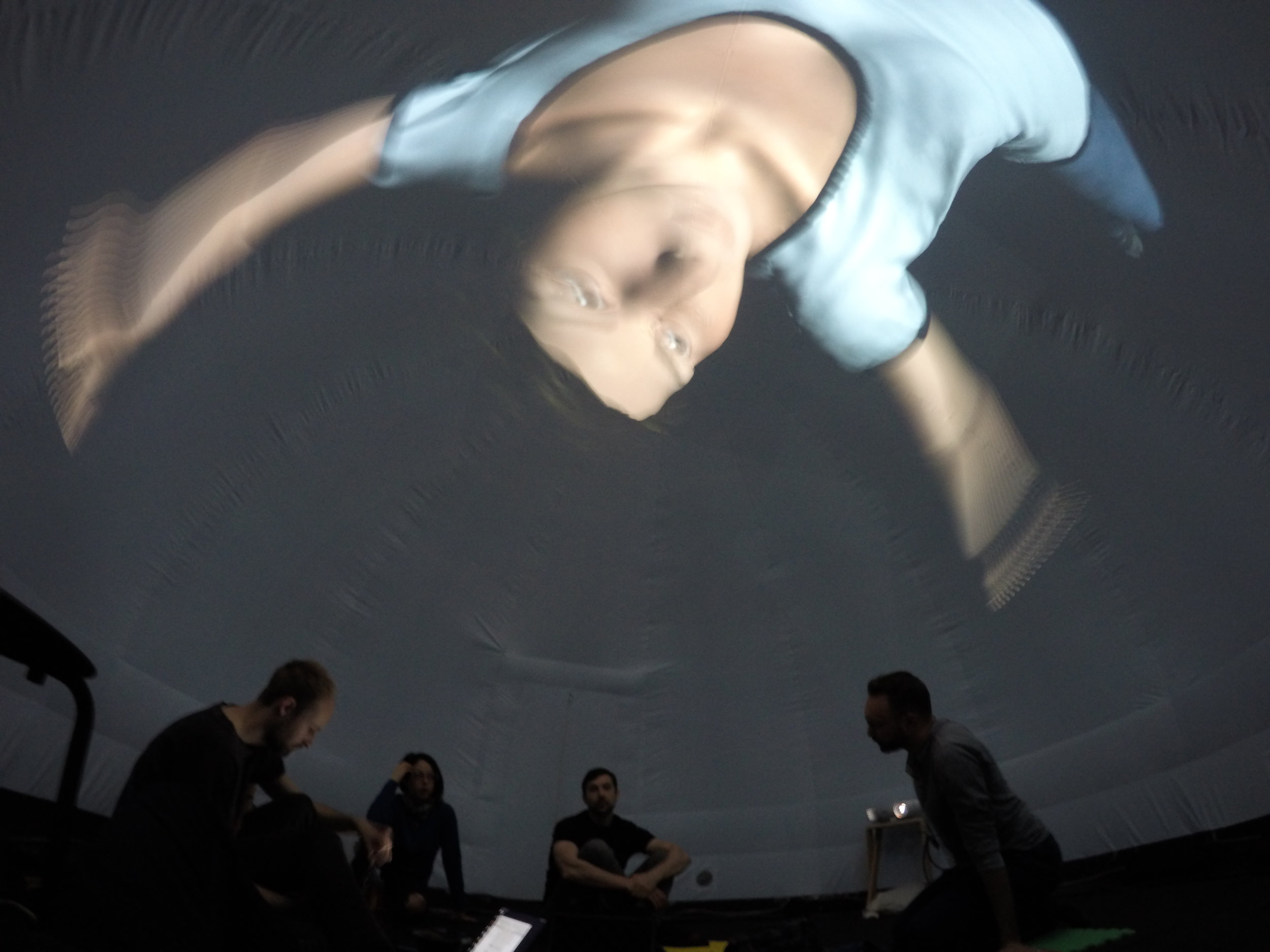
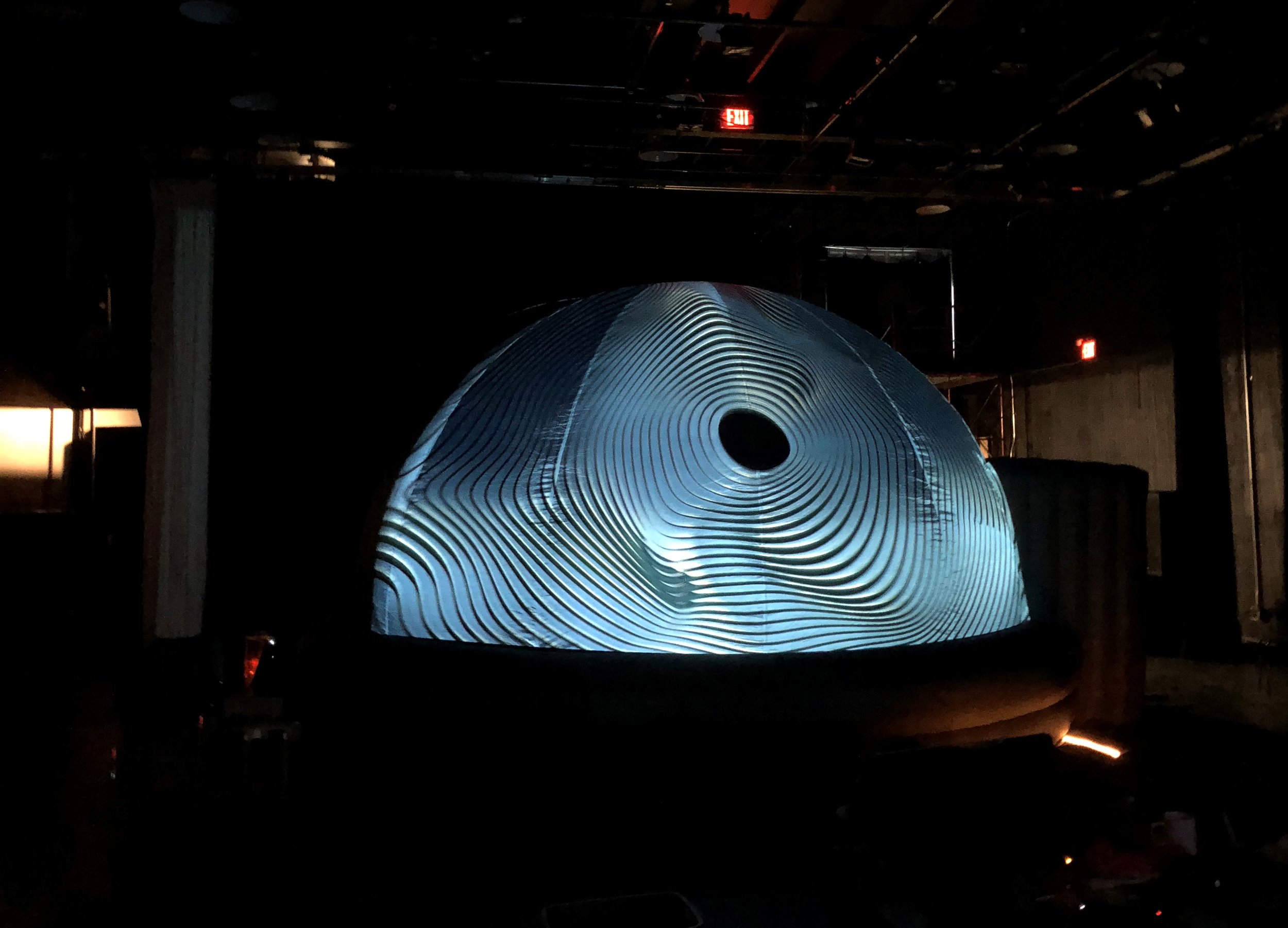
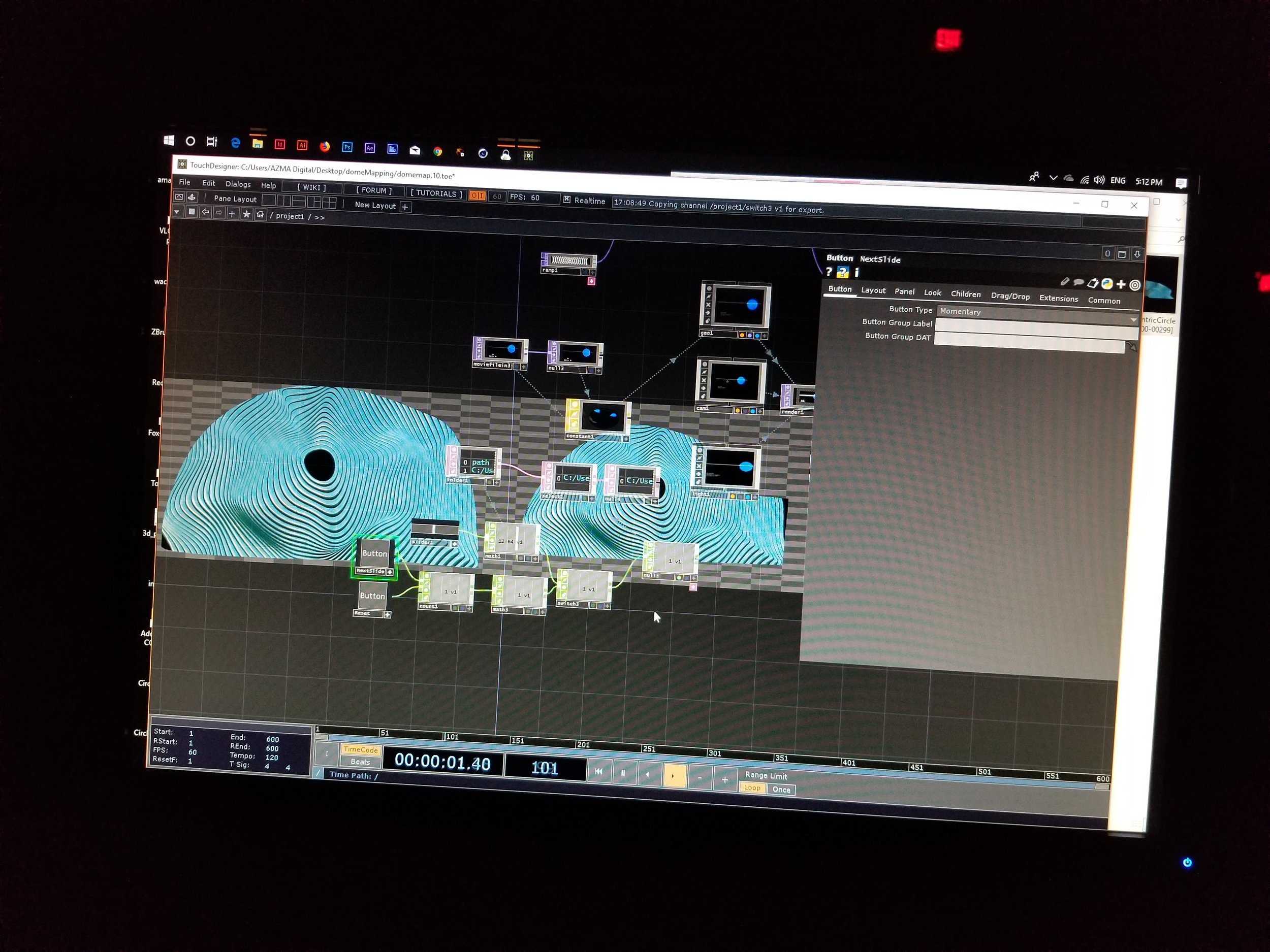
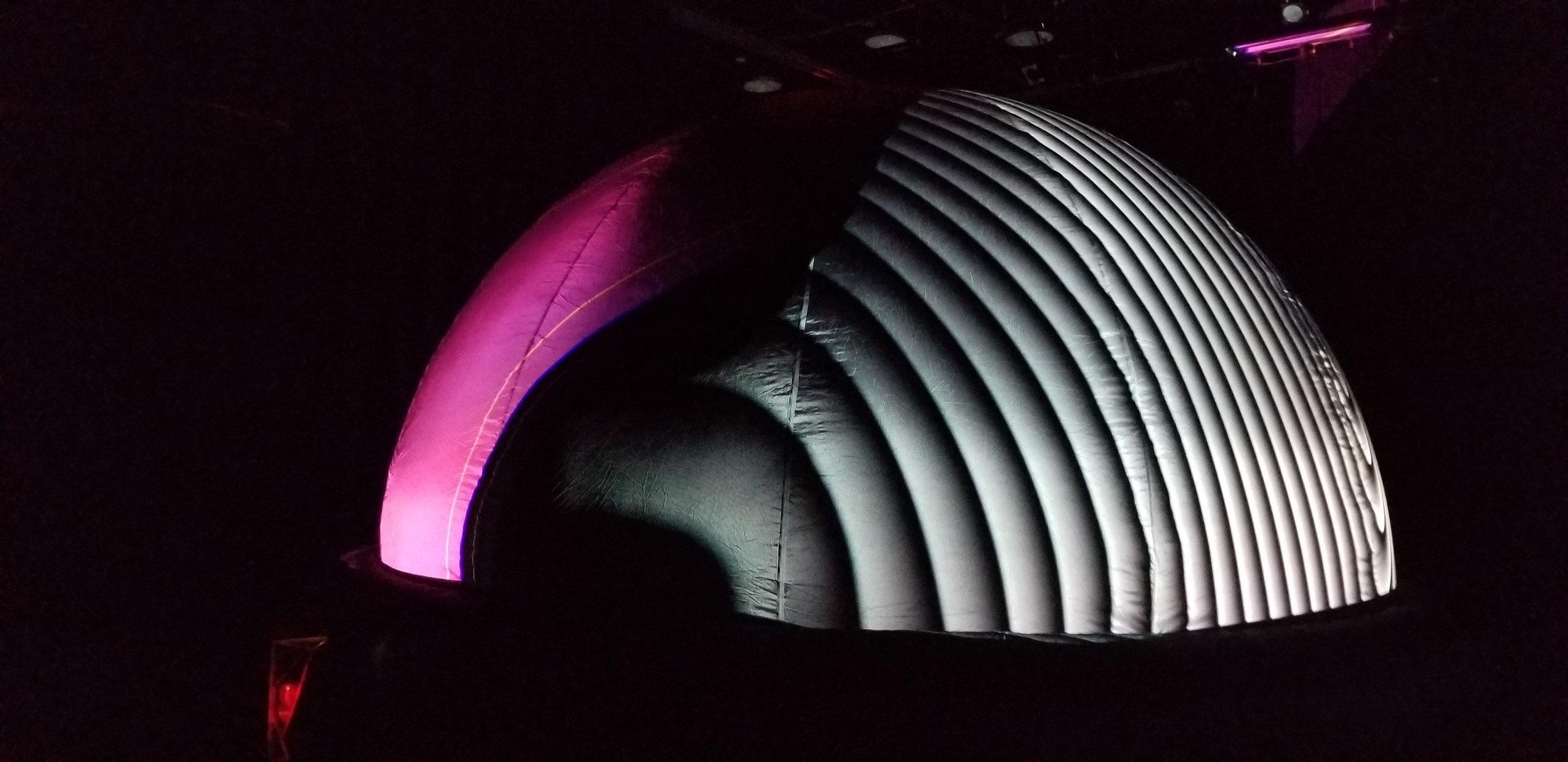
PRESENTATION
We had an open presentation of our research with a small group of attendees from the Calgary arts community. It was great to receive feedback and comments on the development of the project. After the workshop, I will now focus on developing the 12 chapters of the story, writing , sketching and discovering which technique will be the best to tell each one of them.
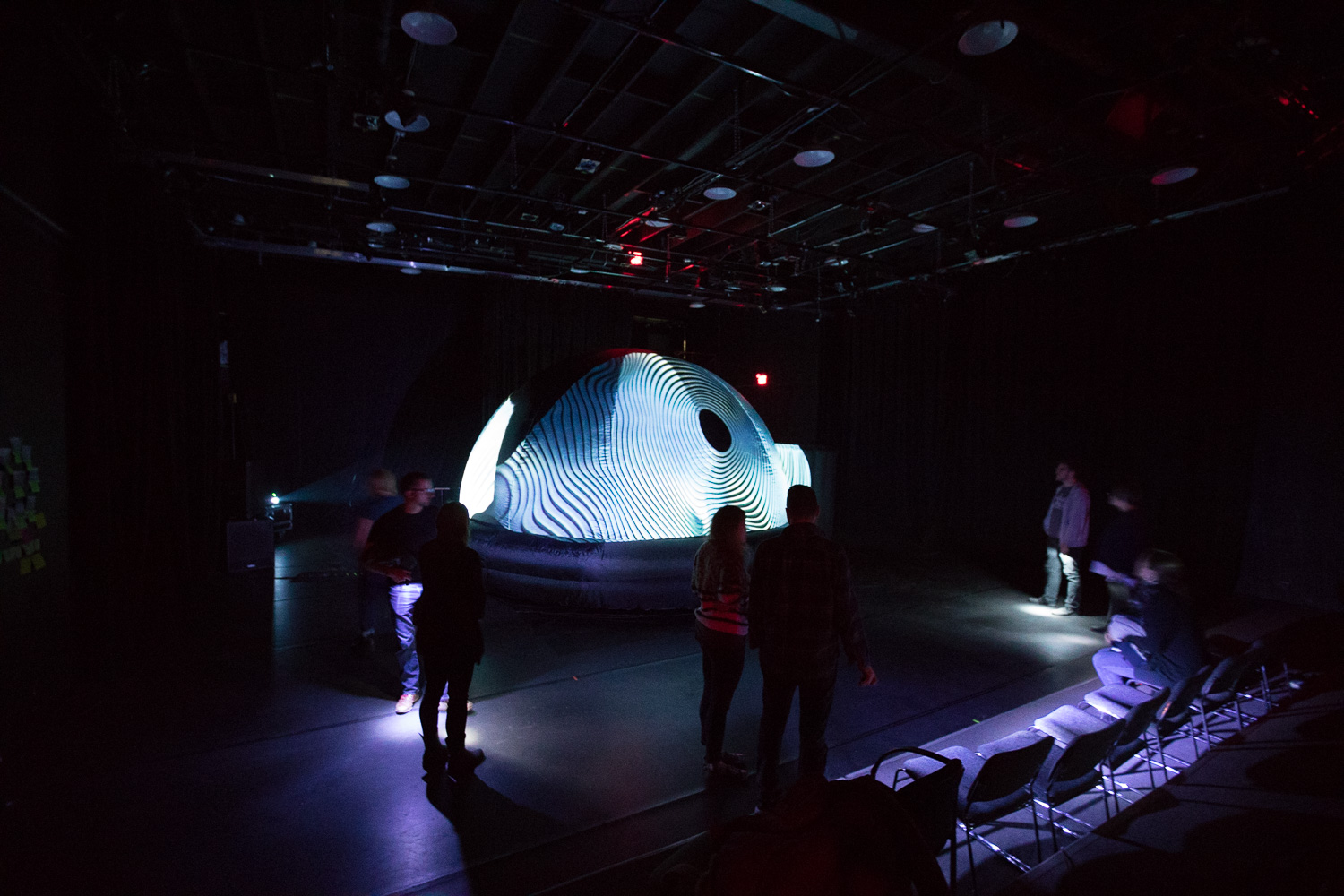


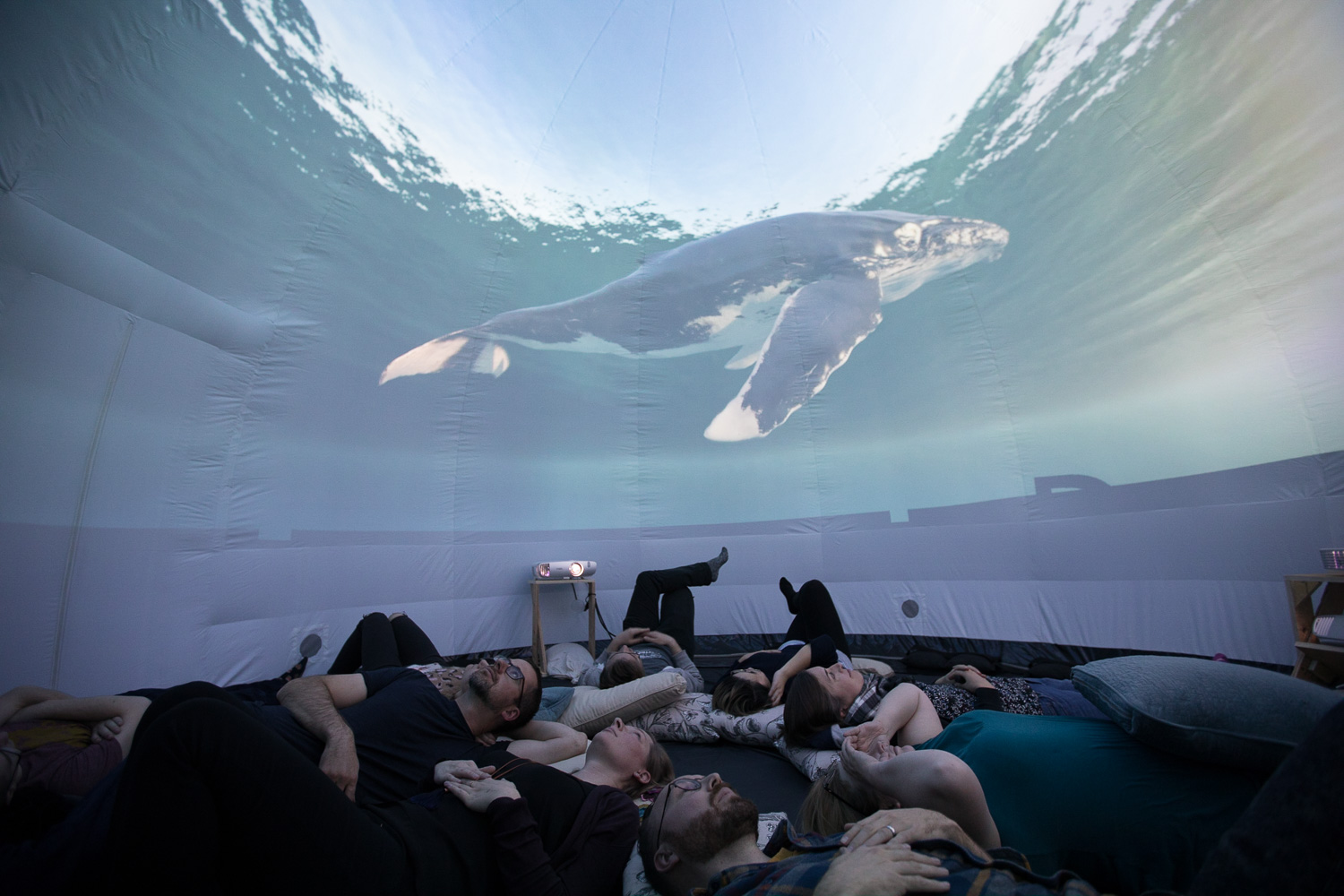
With the substantial array of discoveries made from this workshop, I feel ready to move forward with the next phase of development for Blue Borders. Having the dome prototype in the studio, will help me and other collaborators test animations quickly, drastically improving the production workflow. My future goal is to make the knowledge I have gained during the workshop about dome projection openly available to other artists, as well as have the dome utilized in other creative ways.
CREDITS
Original idea and concept: Laura Anzola
Direction: Laura Anzola
Script: Laura Anzola and Bibiana Rojas
Performer: Montserrat Videla
Dramaturgy: Eric Rose
Narrative Consultant: Bibiana Rojas
Collaborator and Staging Direction: Eric Rose
Animation Direction: Laura Anzola
Digital Lead Animator: Sasha Stanojevic
Additional 3D Animation: Ibrahim Onur Alparslan
Generative Animator: Matthew Waddell
Experimental Animation Direction: Bibiana Rojas
Experimental Animators: Cecilia Traslaviña González, Diego Felipe Cortés, Tatiana Vaca Quintero, Blanca Stella Castellar Pacheco, Daniela Briceño, Julian Arias Garzón
Hand-made Textures: Cecilia Traslaviña González and Julian Arias Garzón
Playback Programming and Projection Technology: Matthew Waddell
Sound Design: Carolina Lucio
Composer: Eblis Álvarez
Azul Song Composers: Nicolas Eckardt and Bibiana Rojas
Azul Song Musical Production: Nicolas Eckardt
Video Editor: Mateo Rudas
Text Commission: Andrea Garcés
Monologue Editors: Ana Luisa González and Pablo Medina
Migration Research Commission: Vania Yael
Audience Experience Consultant: Emily Promise Allison
Photo Documentation: Emily Promise Allison
Storyboard: Laura Anzola
Technical Director: Marc Lavallee
Previous Technical Direction: Mark Eugster
“... Es necesario que haya intruso en el extraño, sin lo cual éste pierde su extrañeza. Si tiene derecho de entrada y de permanencia, si es esperado y recibido sin que nada suyo quede al margen de la espera y de la acogida, entonces ya no es más el intruso, pero tampoco es el extraño. Tampoco es lógicamente recibible ni éticamente admisible excluir cualquier intrusión en la llegada de un extraño”.
Jean Luc-Nancy
Produced by Laura Anzola with production support by Ghost River Theatre and technical support by Axis-Z Media Arts
Thanks to: All our funders and The West Village Theatre.
We acknowledge the support of the Canada Council of the Arts, Alberta Foundation of the Arts and Calgary Arts Development.
